Dieser Artikel ist auch auf Deutsch verfügbar. Click here to find out more about Belarus!
Many may be familiar with the French Maginot Line. Thousands of military structures forming a hundreds of kilometres long stronghold from Belgium to the Mediterranean were to (unsuccessfully) protect France from an attack by the German Reich. The Soviet counterpart to it is far less well known. In parallel to the construction of the Maginot Line, the Soviet Union established the Stalin Line (Лінія Сталіна) in 1928. It ran from Narwa in present-day Estonia via Vitebsk and Gomel in present-day Belarus to Odessa in present-day Ukraine.
Over the next ten years, countless heavily armed and fortified bunkers, anti-tank barriers and trenches were built on a length of almost 2,000 kilometres between the Baltic Sea and the Black Sea. A good example of how feared the Third Reich must have been at the end of the 1930s. Following the adoption of the Hitler-Stalin Pact in August 1939, the western border of the Soviet Union shifted 300 kilometres westwards towards Poland. Stalin ordered the abandonment of the Stalin line in favor of a new Molotov line to be built further west. The weapons were dismantled and put into storage. When the German Reich invaded the Soviet Union in 1941, both defense lines were not ready for battle.
Today there are only a few well-preserved remains of the former Stalin line left. 35 kilometers northwest of Minsk, a small section was restored and transformed into an open-air museum/”military amusement park”. After my visits to Moscow on Victory Day and the Minsk War Museum, it should be clear what this means. It’s going to get weird again… 😉
I had driven to the Stalin Line using my rental car and had been instructed by the uniformed (Red Army) guards about where to park the car – in German (!). Under the strict gaze of Iosseb Bessarionis dse Dschughaschwili, later known as Joseph Vissarionovich Stalin, I parked the car. Unfortunately I don’t know if the Red Army also took care about parking management back in 1941, but the whole thing started just as weird as I had expected…
The area can be structured into roughly eight different areas: the parking lot with the cash desk, the souvenir shop and the café, a restored and accessible part of the actual Stalin line, a shooting range, a theatre, a pond, an exhibition of war equipment from various eras, a tank race track and a scrap yard. I had come here for the Stalin line, so I started my tour there too.
The Stalin Line
There was not much to see on the surface except for some trenches, a watchtower and an anti-aircraft gun. So let’s go underground!
“границы с.с.с.с.р.р. священны и и неприкосновенны” was written on this wall, in English “The borders of the USSSR are sacred and untouchable”.
The bunkers of the Stalin Line seemed to me to have been less sophisticated than those of the Maginot Line. But that’s exactly why the Maginot line was doomed: too much sophisticated technology, too weak armament. Of what use is an underground electric railway for transporting ammunition if the few guns can only barely cover the national border, for example?
The shooting range
When Eastern Europeans go to a military amusement park, they want to get some good action there. How about a few shots at the Wehrmacht, like back in the day? No problem. There was even some choice, on the left a target of abvious shape, and on the right a real German tank 😯
Of course, only blanks were fired here. The target probably fell over due to the friendly Red Army gentleman pressing on a hidden button while nobody was looking. But his many customers didn’t really care about that.
So: Choose your weapon…
…and then either get a short briefing on how to use the German Maxim MG-8 submachine gun…
…or start shooting with the Automat Kalaschnikow AK-47 (Автомат Калашникова АК АК-47). One shot usually cost five roubles (approx. 2.10 euros).
From time to time the artillery cannon was fired to provide an appropriate background noise. Here, too, only propellants were “fired” without a projectile. An electronic circuit ignited a second load of gunpowder in the tank a few seconds after the launch and let black smoke rise there.
If you wanted to, you could also participate in Paintball tournaments or catch up with your ГТО training. ГТО stands for “Готов к труду и обороне СССР”, a kind of basic military training intended for the entire population of the Soviet Union.
Those who showed the expected performance in disciplines such as “running 50 metres”, “marching fast”, rope climbing, cross-country skiing, “carrying ammunition boxes”, “assembling and dismantling weapons” or “throwing grenades” received a gold or silver badge in the respective age category. From 1972 onwards, children starting from the age of seven could participate. No badges were awarded after the age of 55 (women) or 60 (men).
A bit like the Sports Badge in Germany, only with much heavier armament 😯
The Theater
If you’re now assuming that this was all of the entertainment offered, you’re completely wrong. We’re just getting started. In front of the auditorium of the nearby open-air theatre there was an entire theater of war. Actors, tanks and other vehicles reenact battles for the whole family on special occasions (e.g. on 9 May, Victory Day).
Belarusian pragmatism: “осторожно танки”, “Attention tank”! So first look to the left whether a tank comes from there, then to the right whether a tank comes from there, and only afterwards cross the theater of war. Just as you learned in Kindergarden 😉
Passing the pond I went to the exhibition grounds. How about a ride on a gun ship? No? Too bad…
The Tank Racing Track
If you’ve still not had enough after the theater, shooting range and gun boat, you could continue with a wild ride on a tank. There was a whole range of Soviet and German models to choose from. However, the fun was not cheap: For an approximately 1750 meter long drive of about 15 minutes duration they charged between 200 roubles (~85 Euros, Soviet tank type PT-76/ПТ-76) and 2000 roubles (~850 Euro, German assault gun III). The cost was spread across up to ten passengers.
On the day of my visit the cheapest model, the Soviet amphibious tank PT-76 from 1952, was ready for departure. Its 240 HP engine accelerates the tank up to 45 km/h on land and up to 10 km/h in the water.
The driver put in several wild laps over the hills of the 600 meter long race track. Safety precautions? None! The Red Army didn’t have any seat belts back then either… 😯
In addition to the tank race track, sightseeing flights with a Soviet Mil Mi-2 (Миль Ми-2) military helicopter are also available on request.
The exhibition grounds
All kinds of tanks, airplanes, rockets, etc. were distributed over the rest of the area. Such exhibition areas can be found in almost all countries of the former Eastern bloc. In most cases they are also equipped with roughly the same models.
I wonder if the employees sometimes drive to the supermarket with this caterpillar transporter? 😉
A rare sight: On the left two launching platforms for the S-300P (С-300П, vertical tubes) and S-200 (С-200, rocket with four engines) air defense systems can be seen. Both are apparently currently stationed in Syria.
In the middle towers a 22 metres high single-stage R-12 (P-12) rocket. Nothing special, you might think. But the deployment of these medium-range ballistic missiles to Cuba in 1962 triggered the Cuban Crisis and pushed humanity to the brink of total nuclear destruction. They were also supposed to be deployed in the GDR, but this never happened due to the availability of the successor R-14 (P-14).
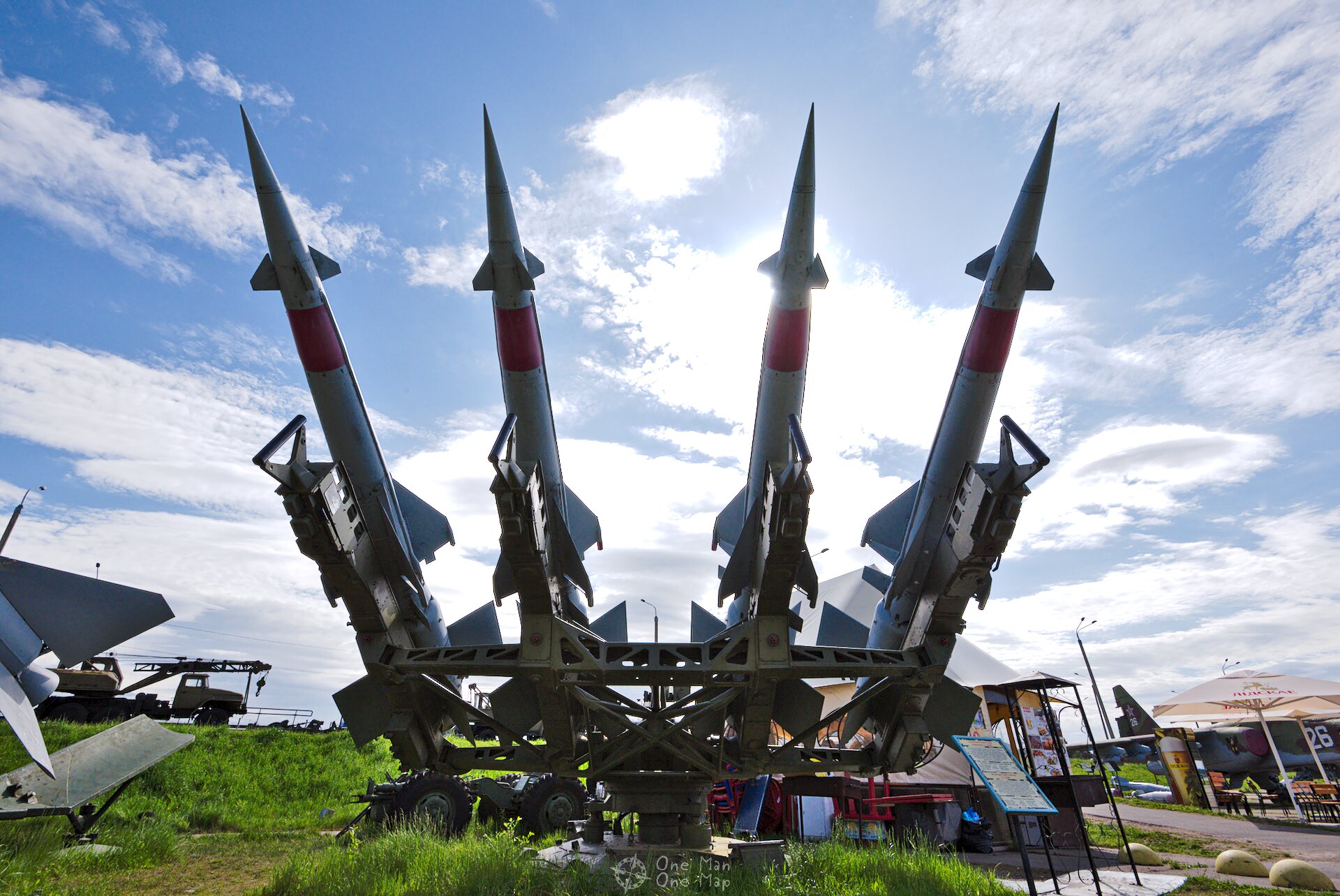
After so much action it was time for some rest. Fortunately, there was a small snack bar in the middle of the area. Where else can you sit between a beverage vending machine, a Su-25 (СУ-25) fighter jet and a stack of bombs and enjoy the sun?
The relationship with Lenin seemed, as so often, to be somewhat problematic. On one hand, the bust was as high as an adult. On the other hand, it has been placed in a corner at the very back edge of the site, surrounded by an additional fence.
The Junkyard
A second museum could probably have been filled with the wrecks scattered around the site. Some of the vehicles were waiting for restoration in the in-house workshop. The rest was probably beyond repair and had been placed in the grass to increase the “warzone” look.
The next article will take us to Brest, the last stop on my tour through Belarus. Railway and nature lovers will definitely like what’s’ coming, that much I can already disclose… 😉
This post was written by Simon for One Man, One Map. The original can be found here. All rights reserved.

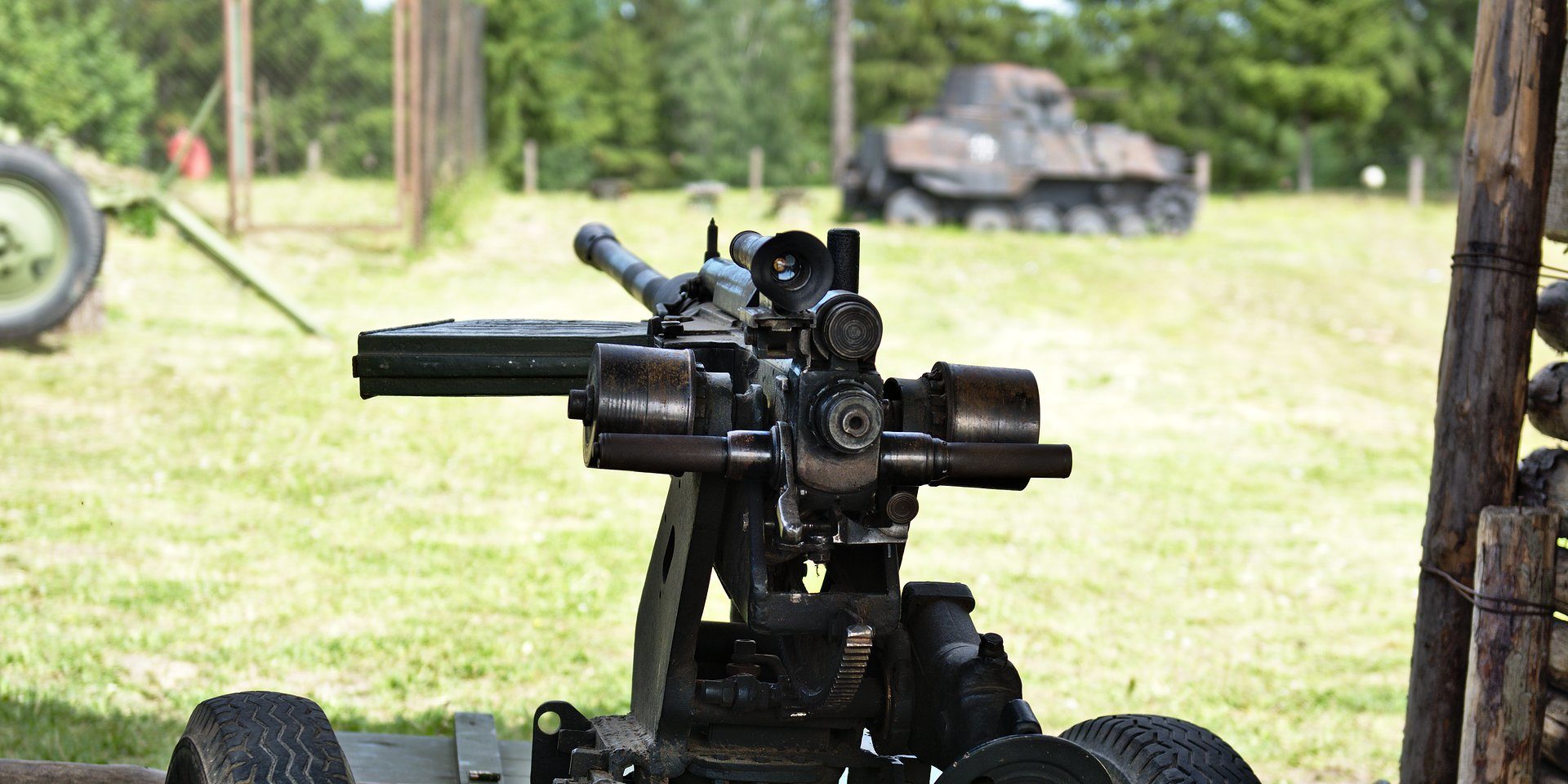
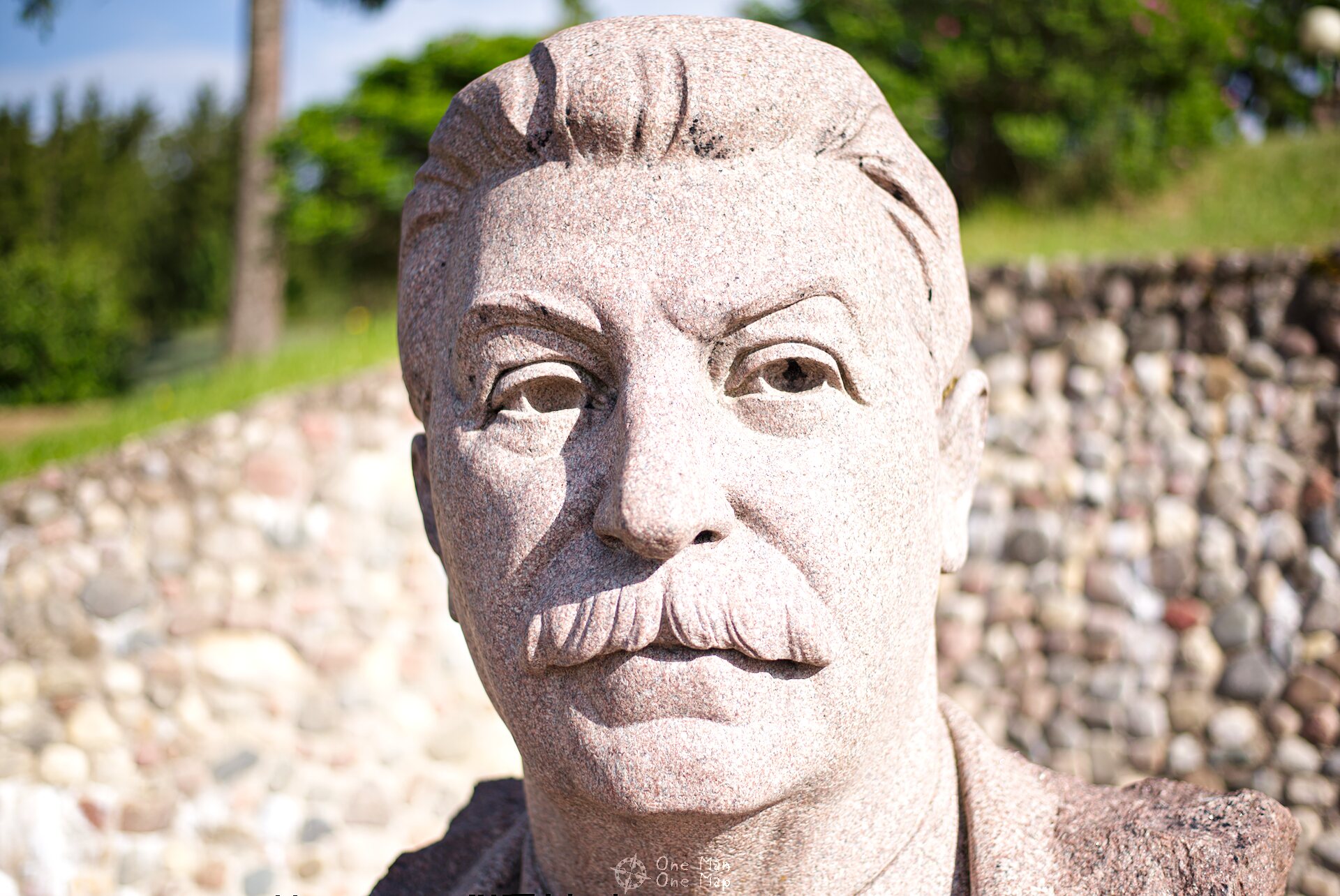
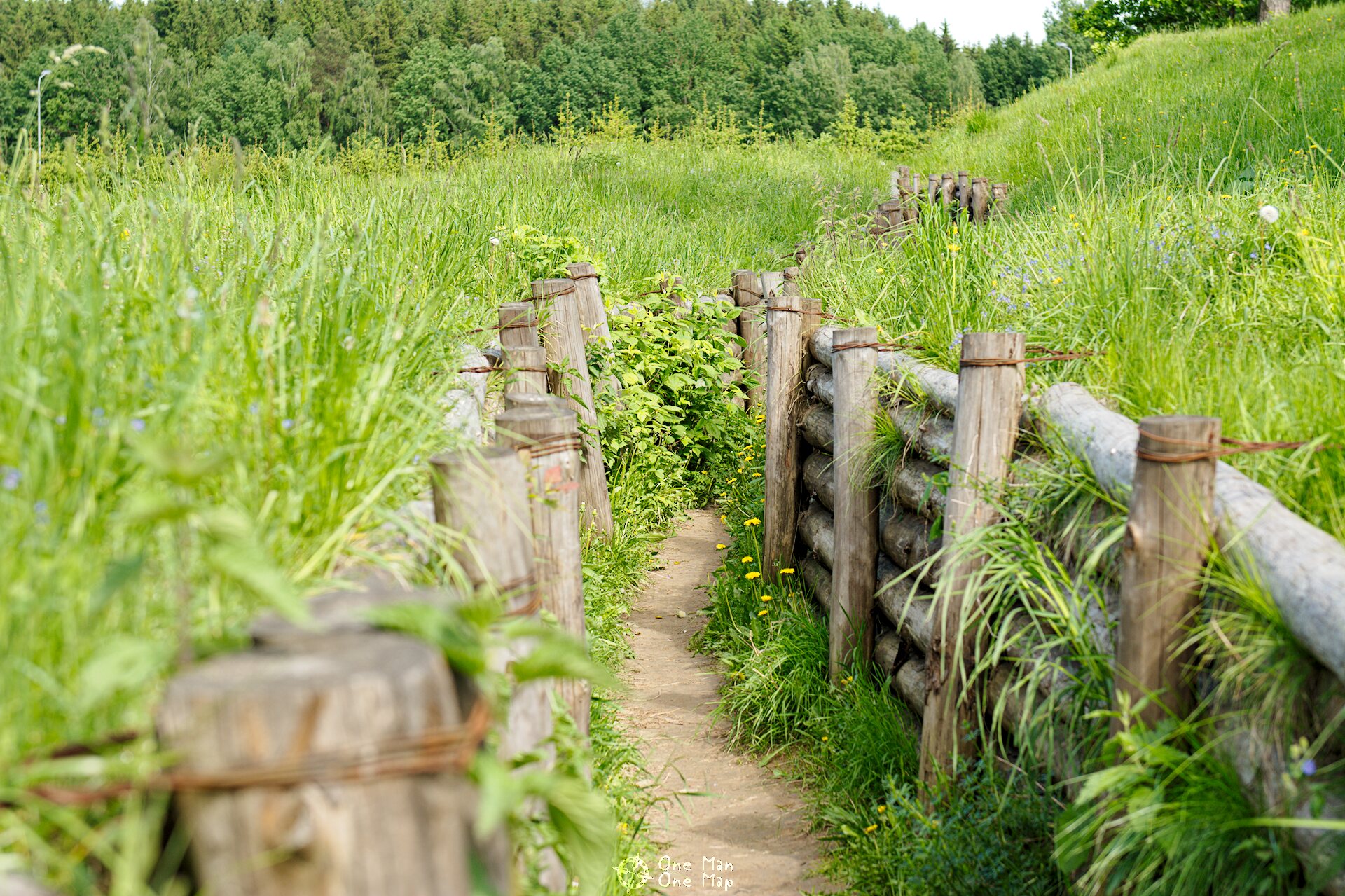
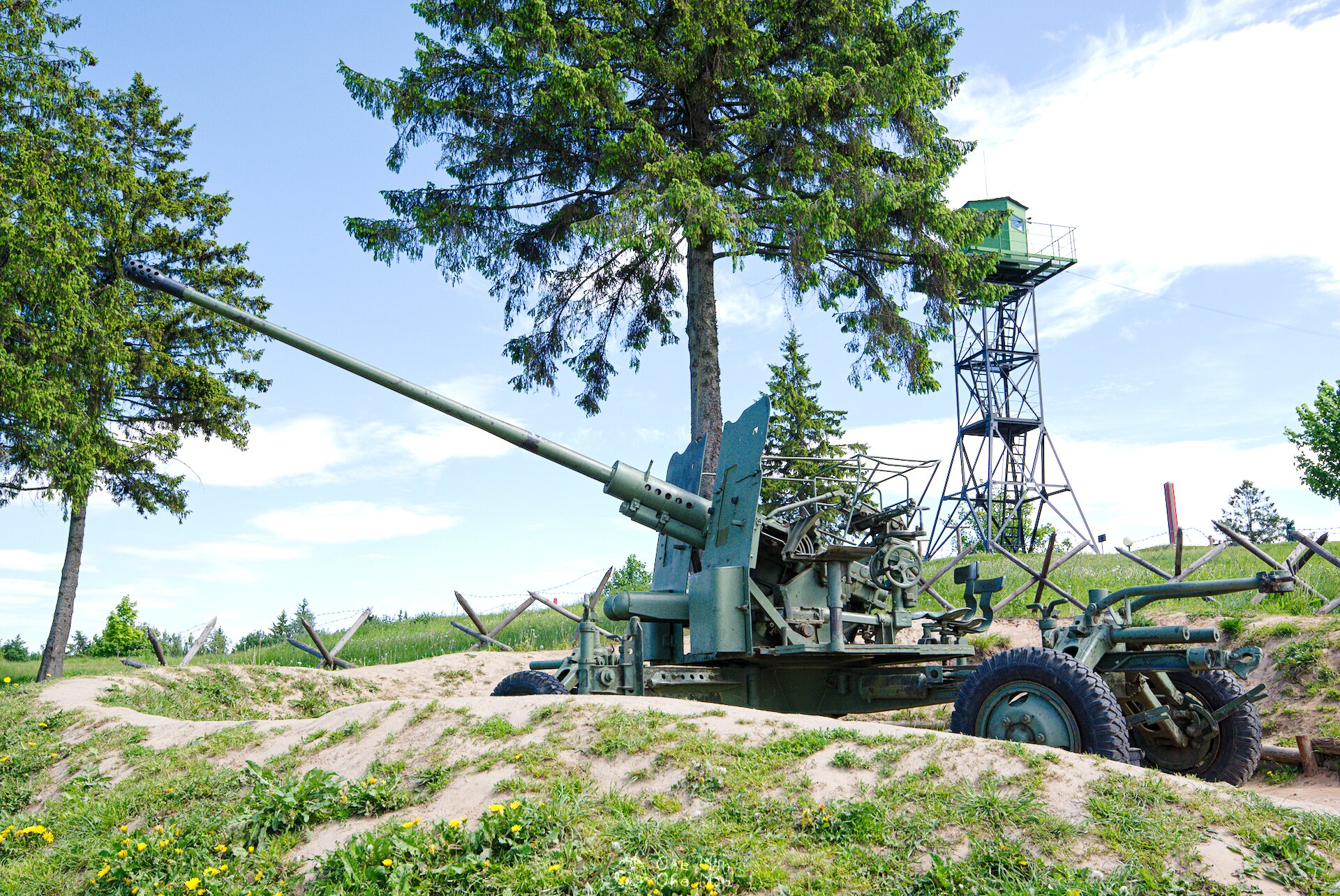
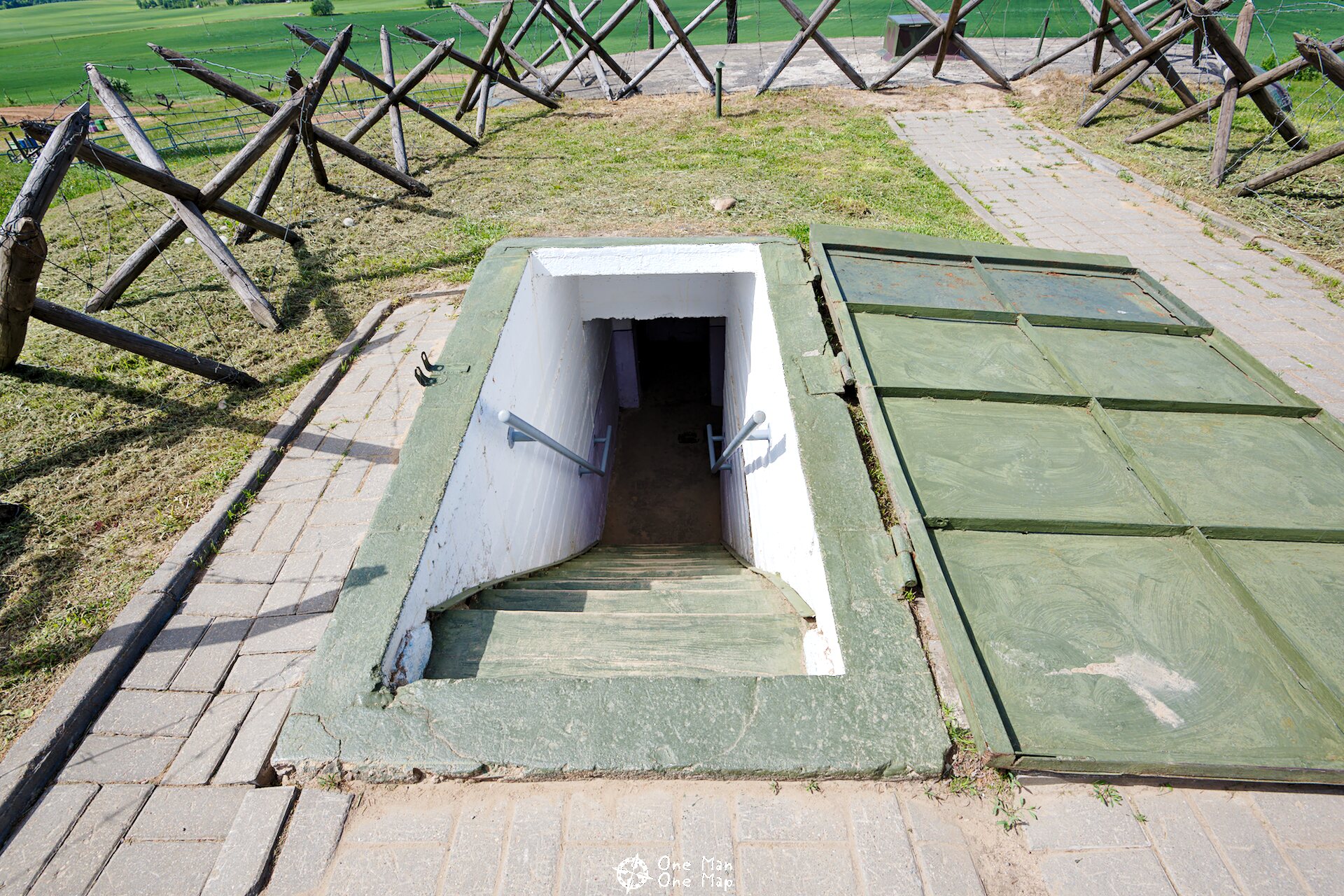
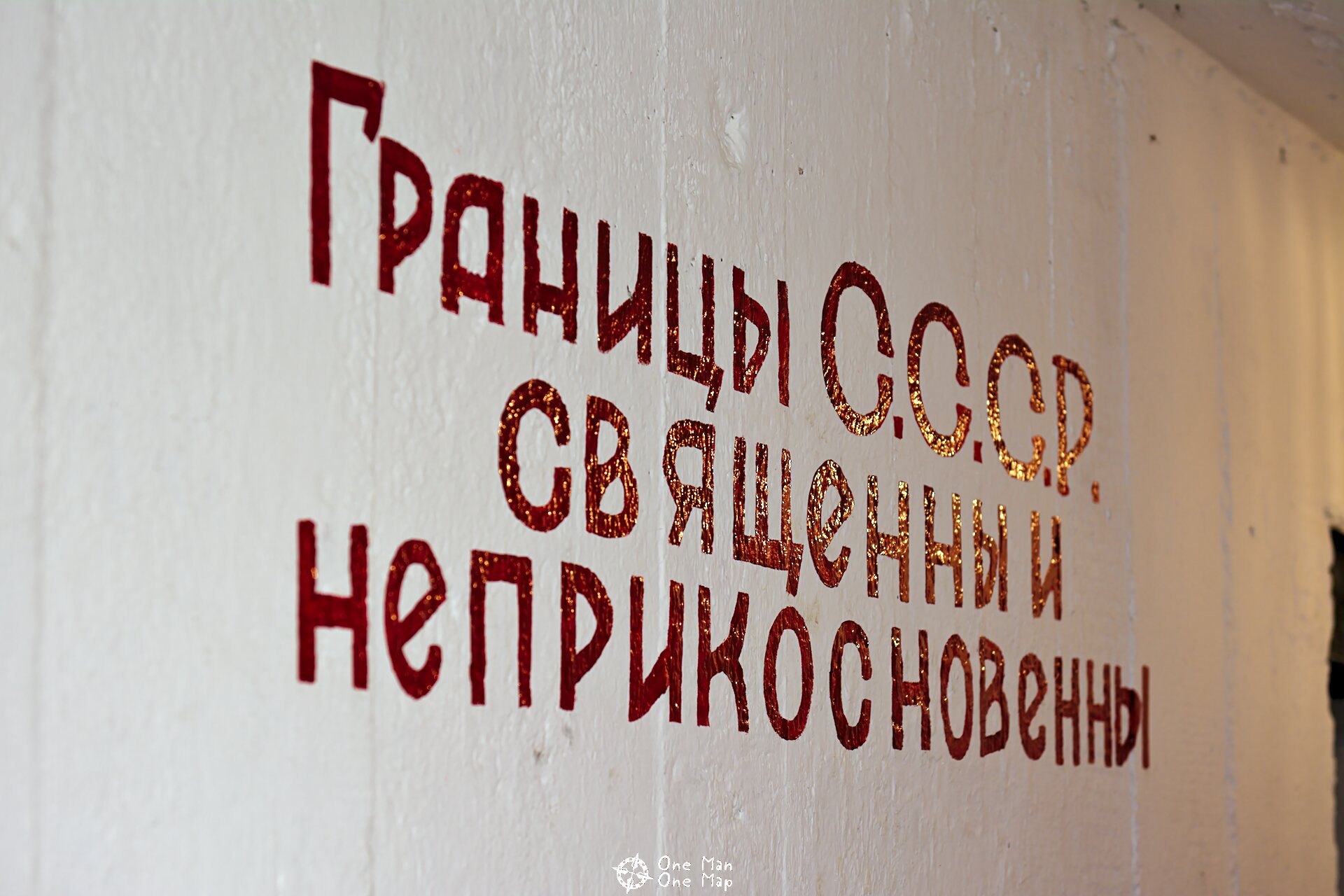
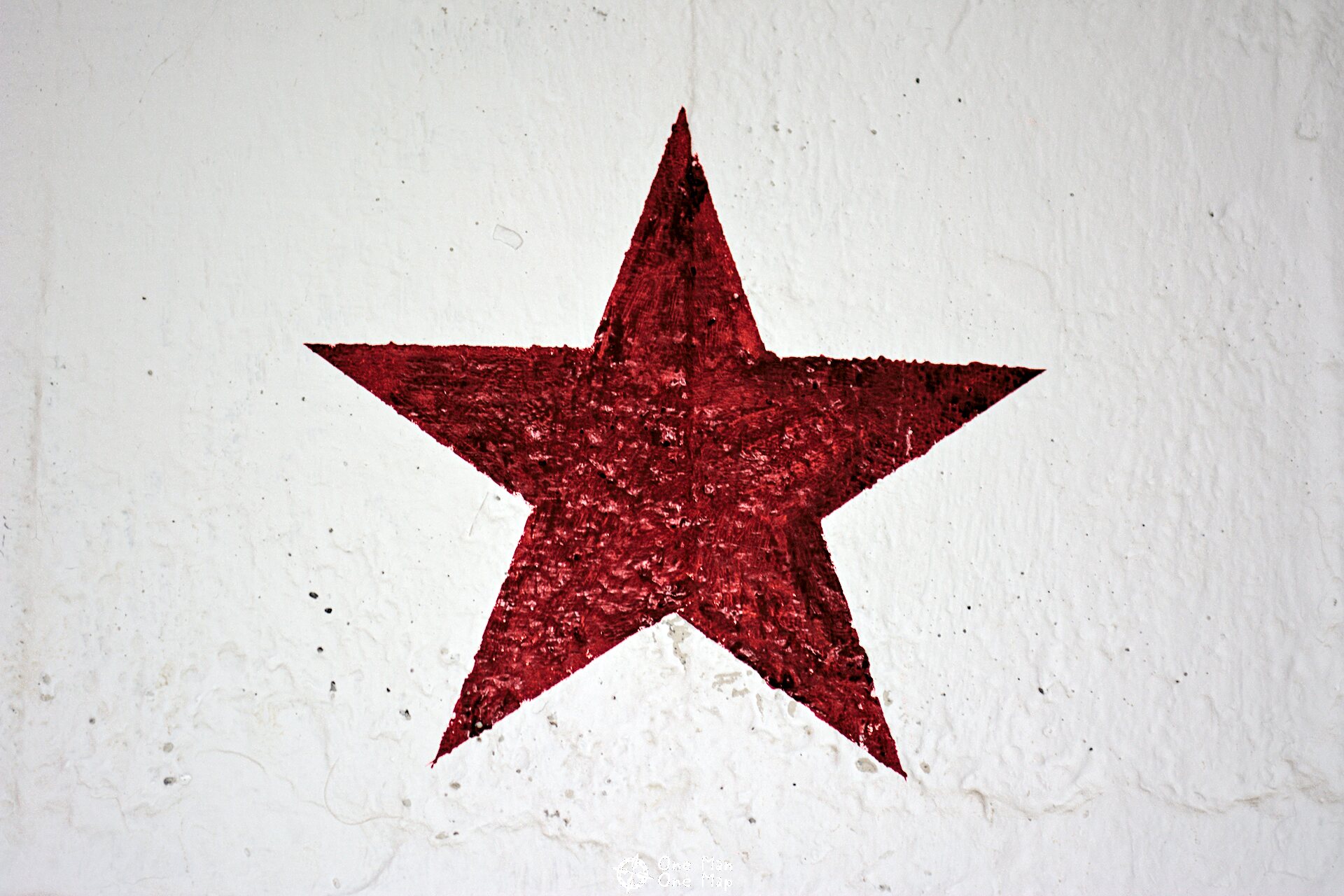
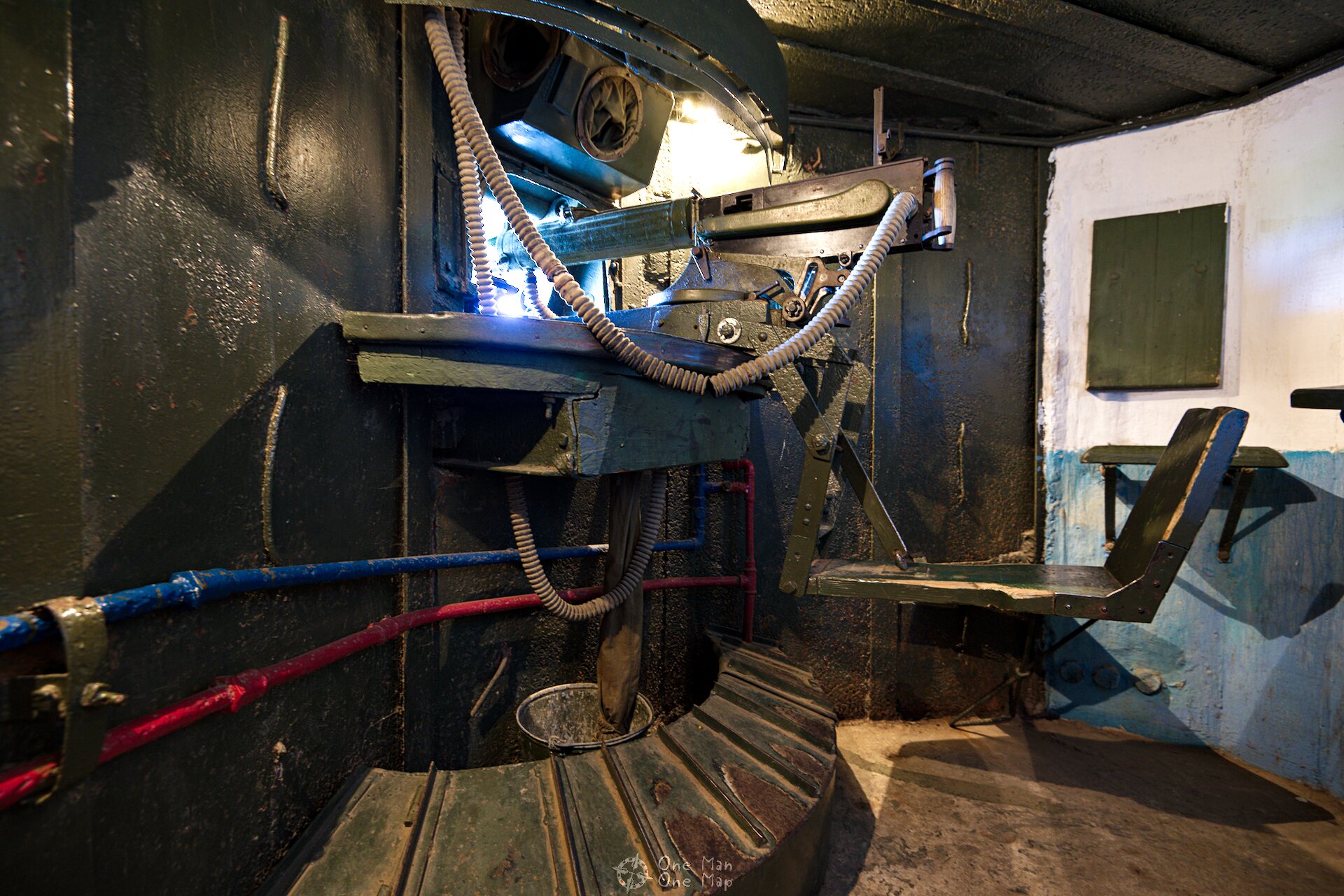
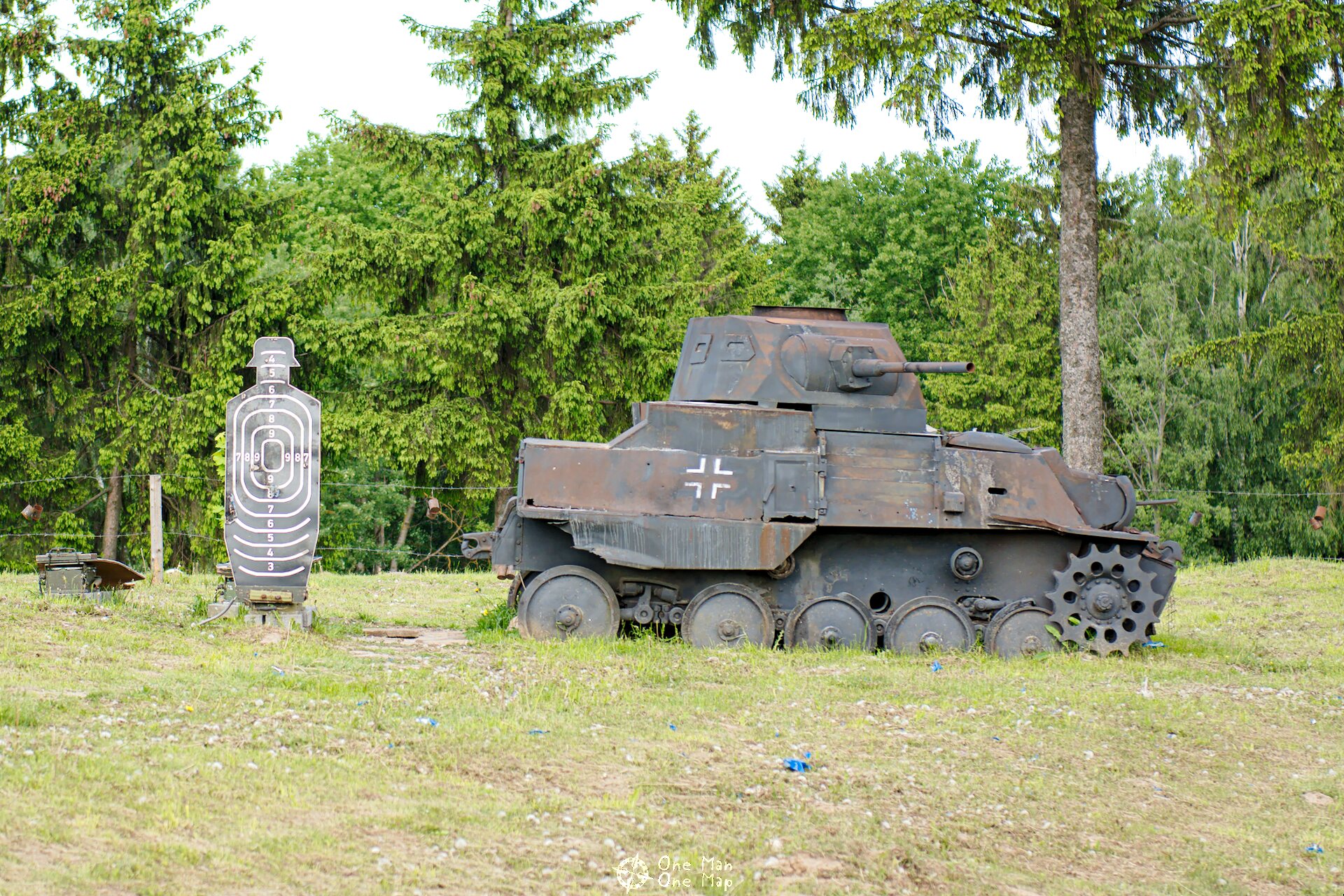
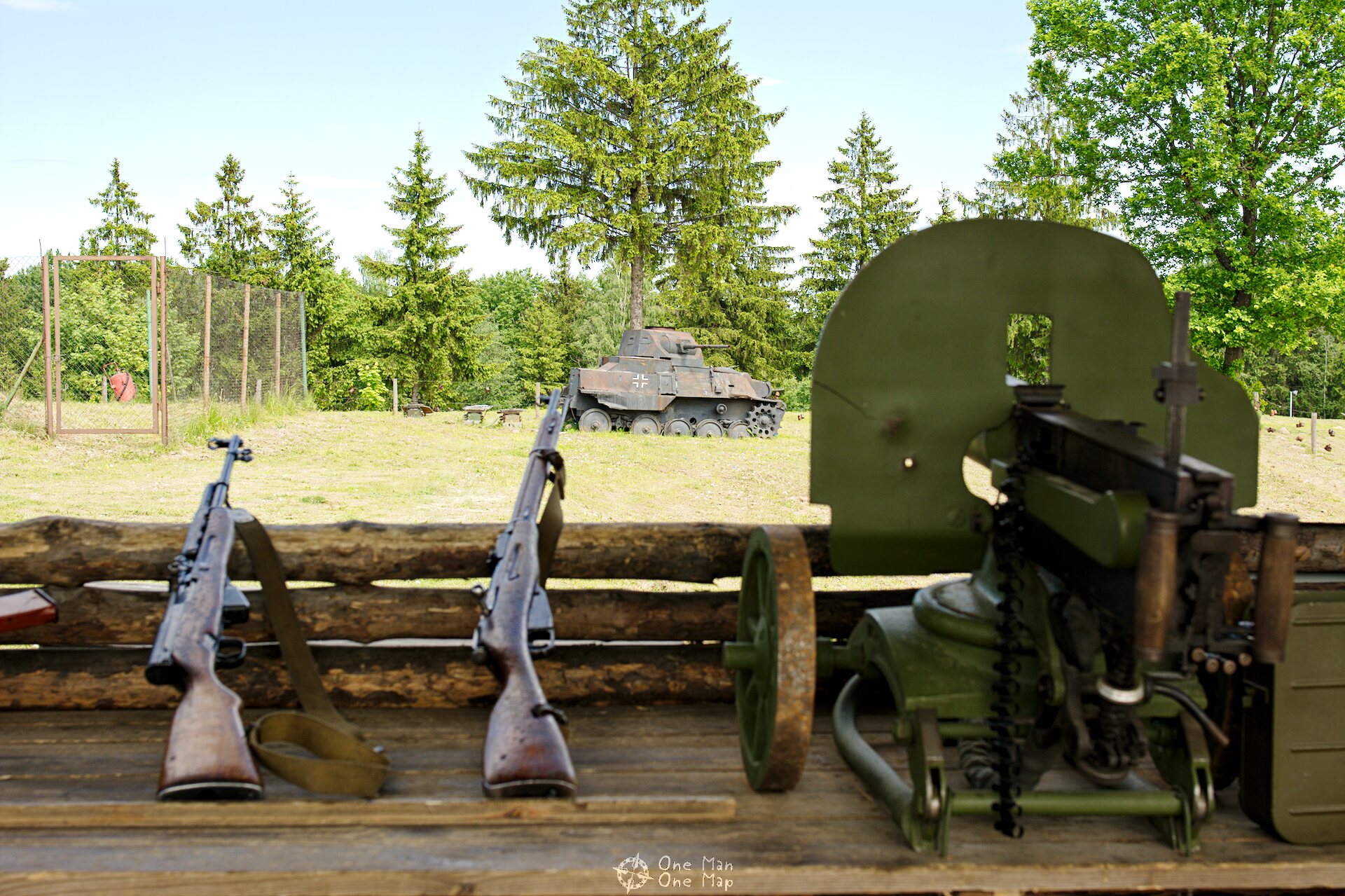
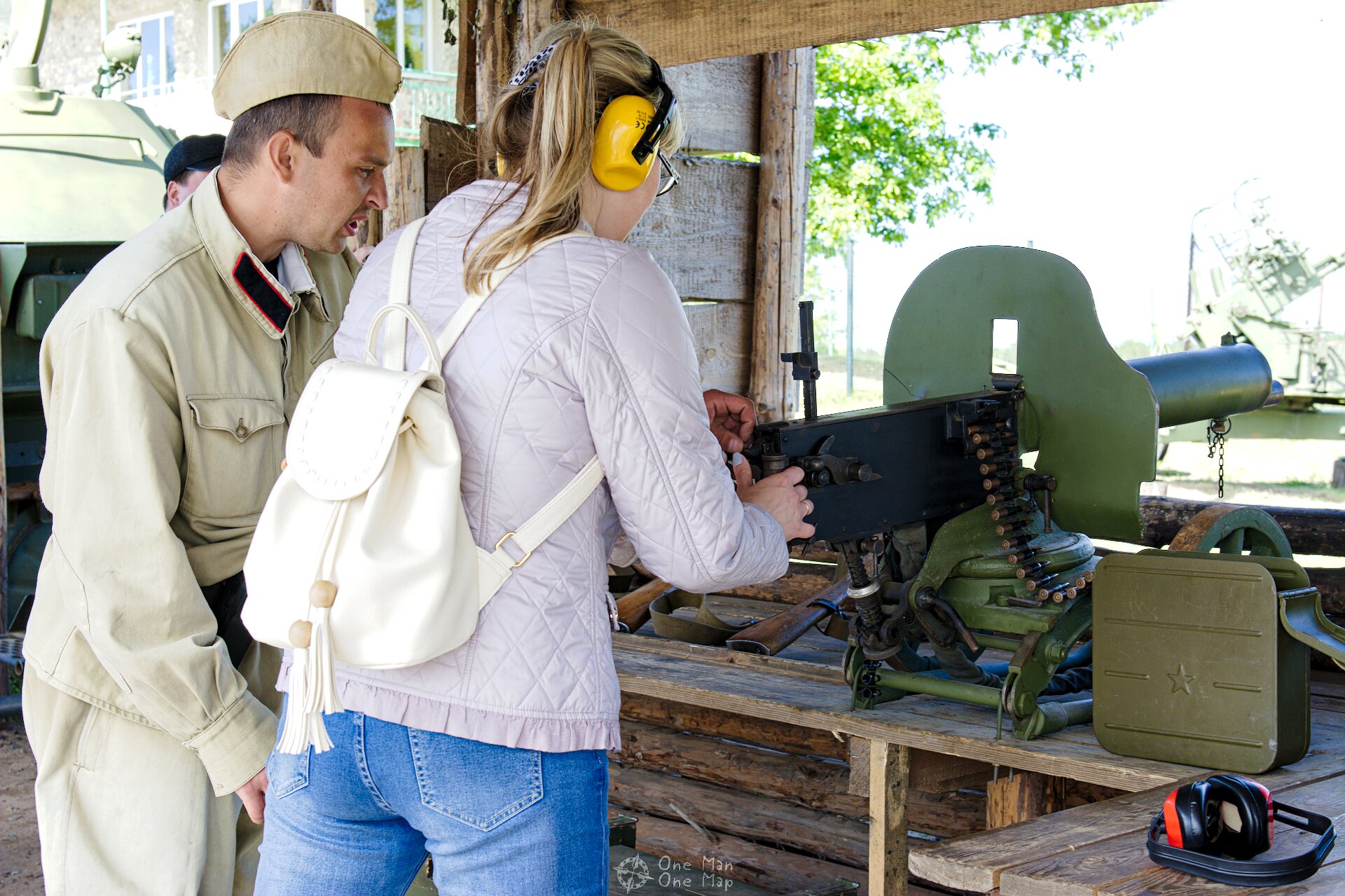
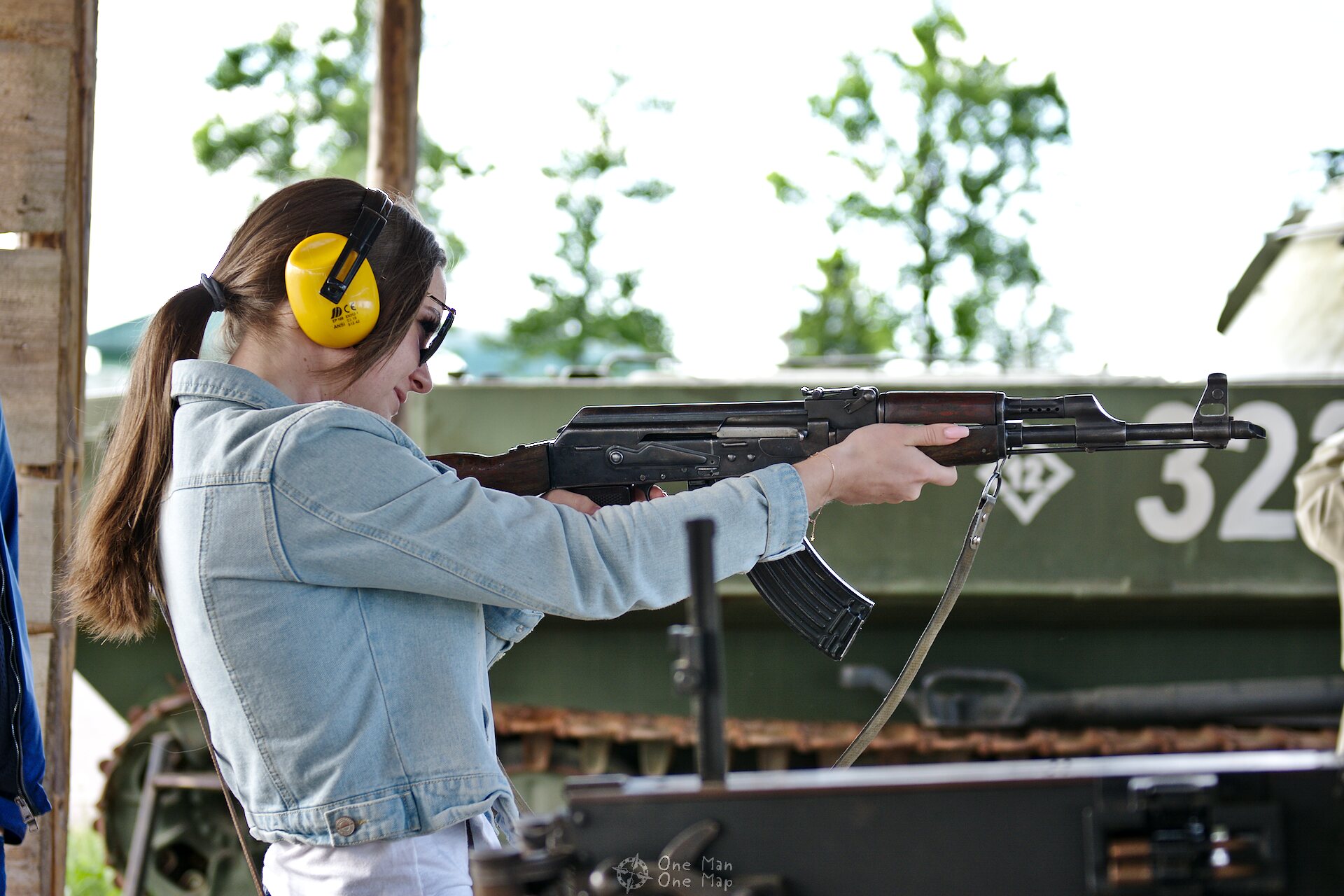
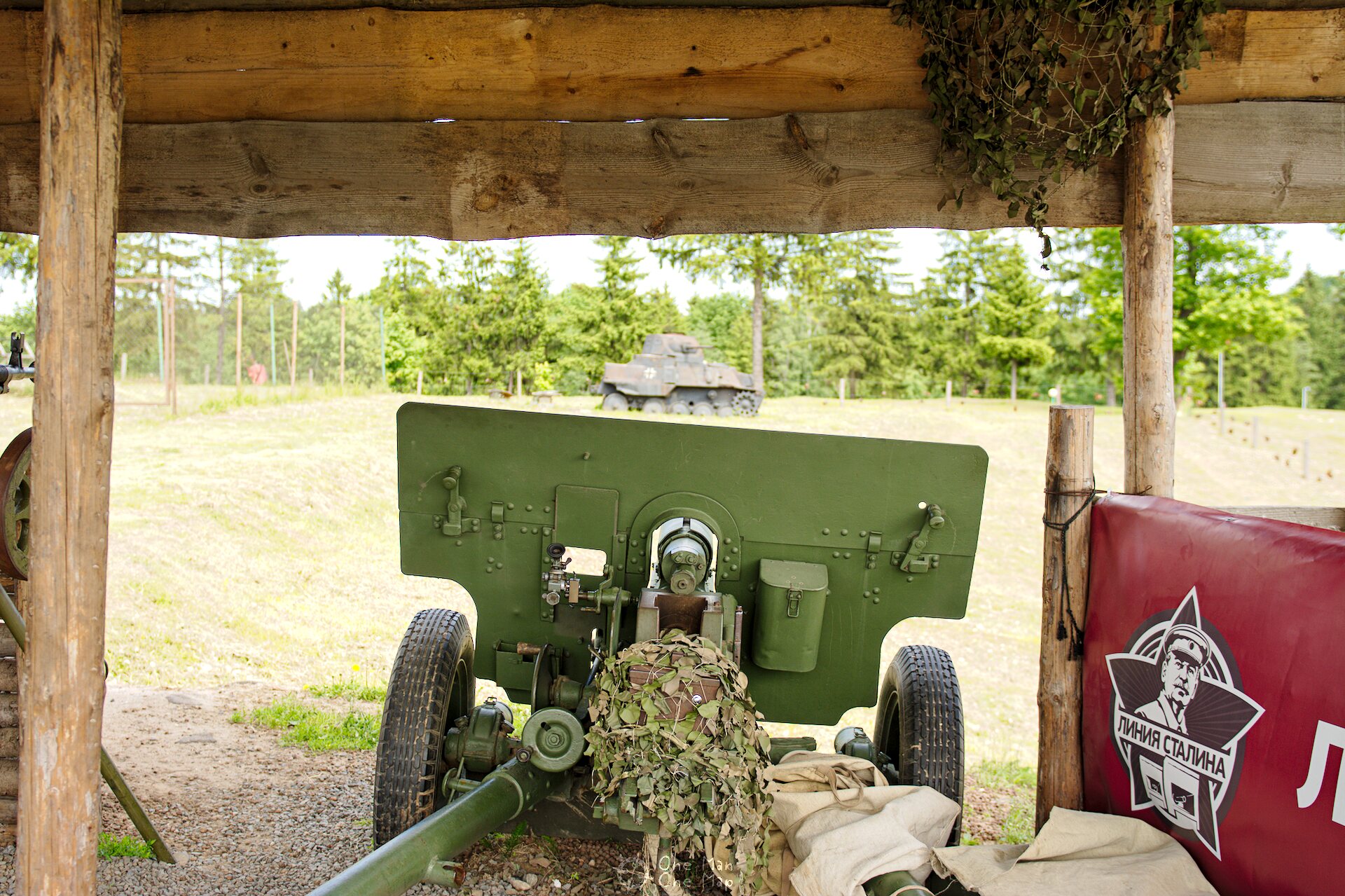
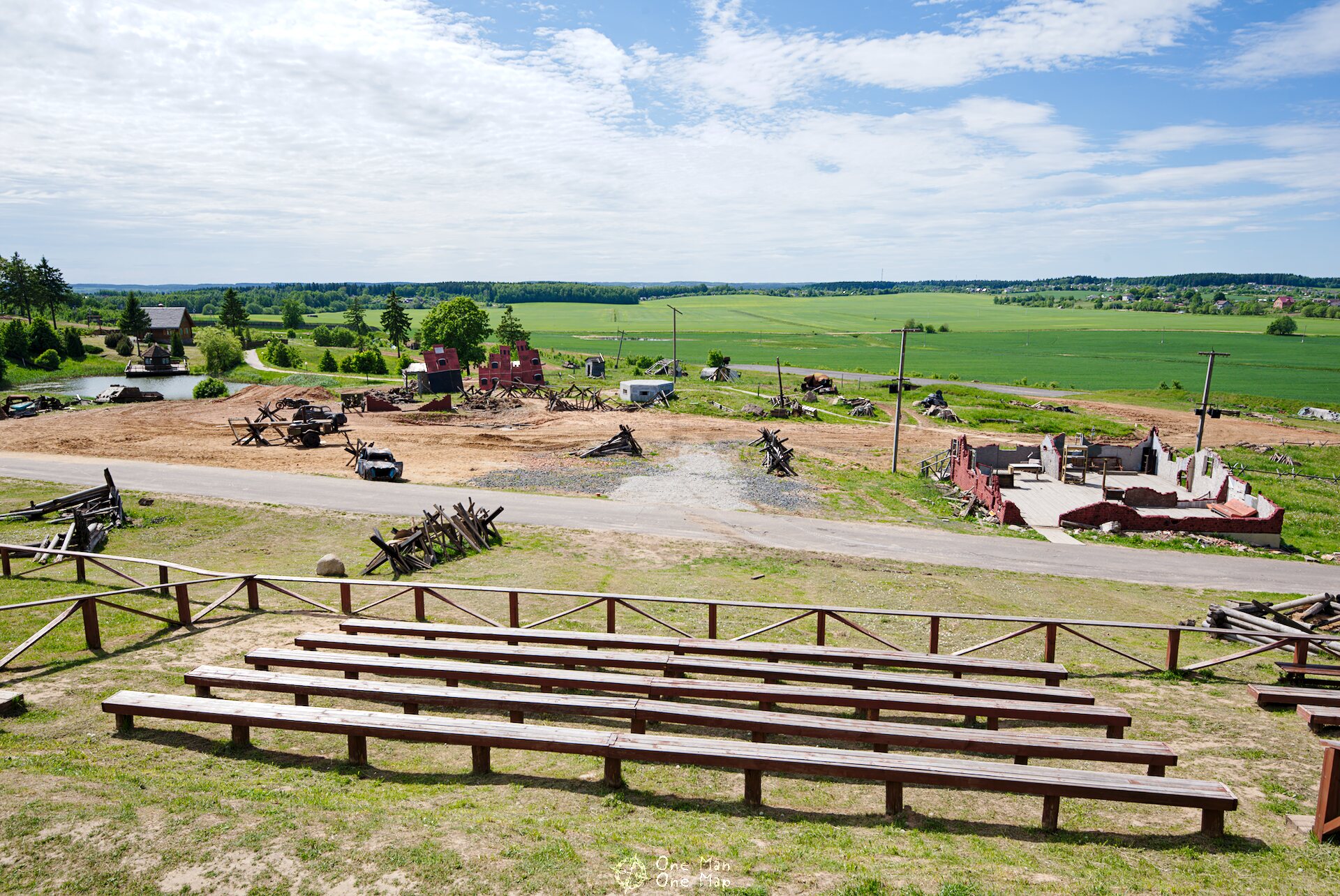
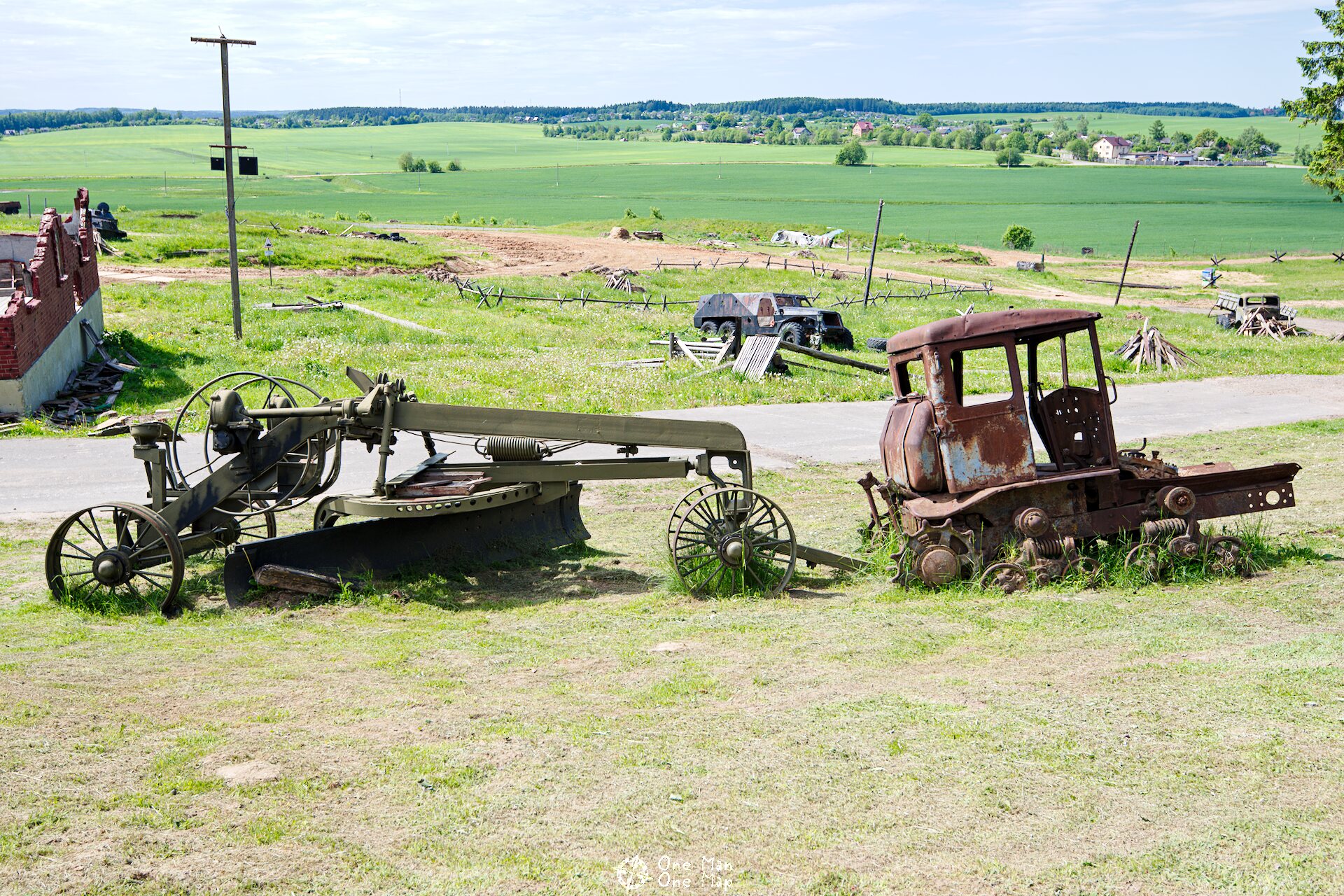
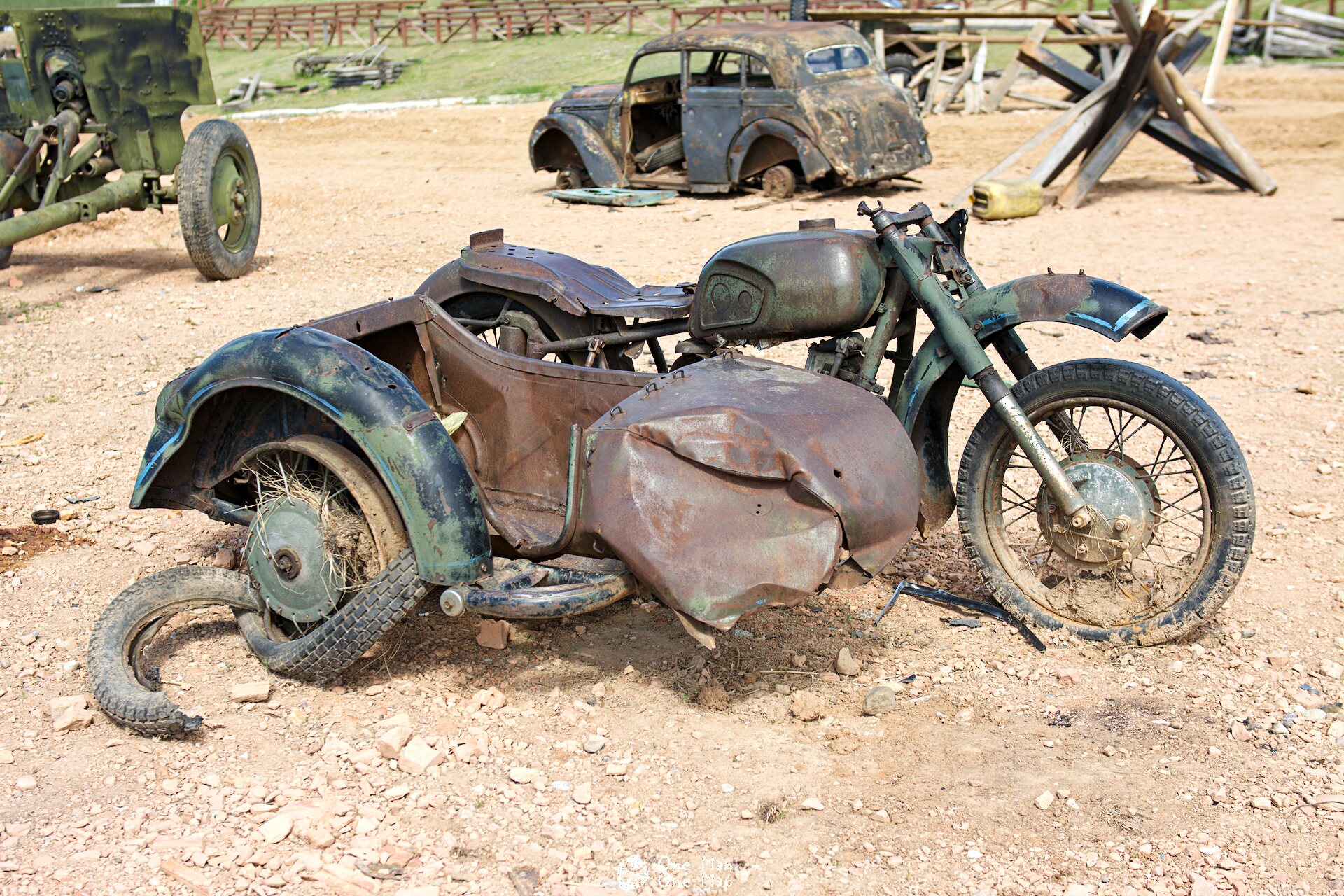
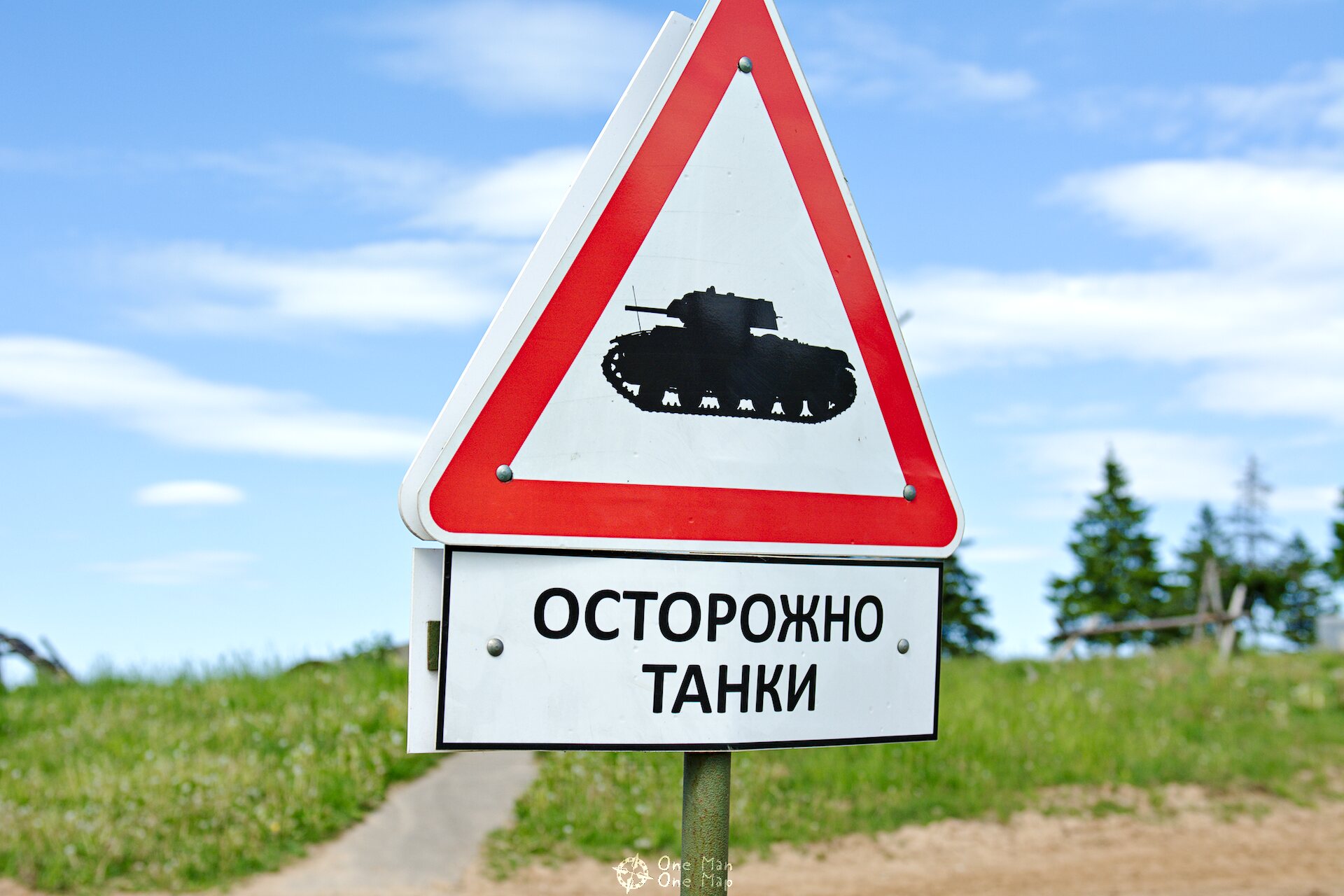
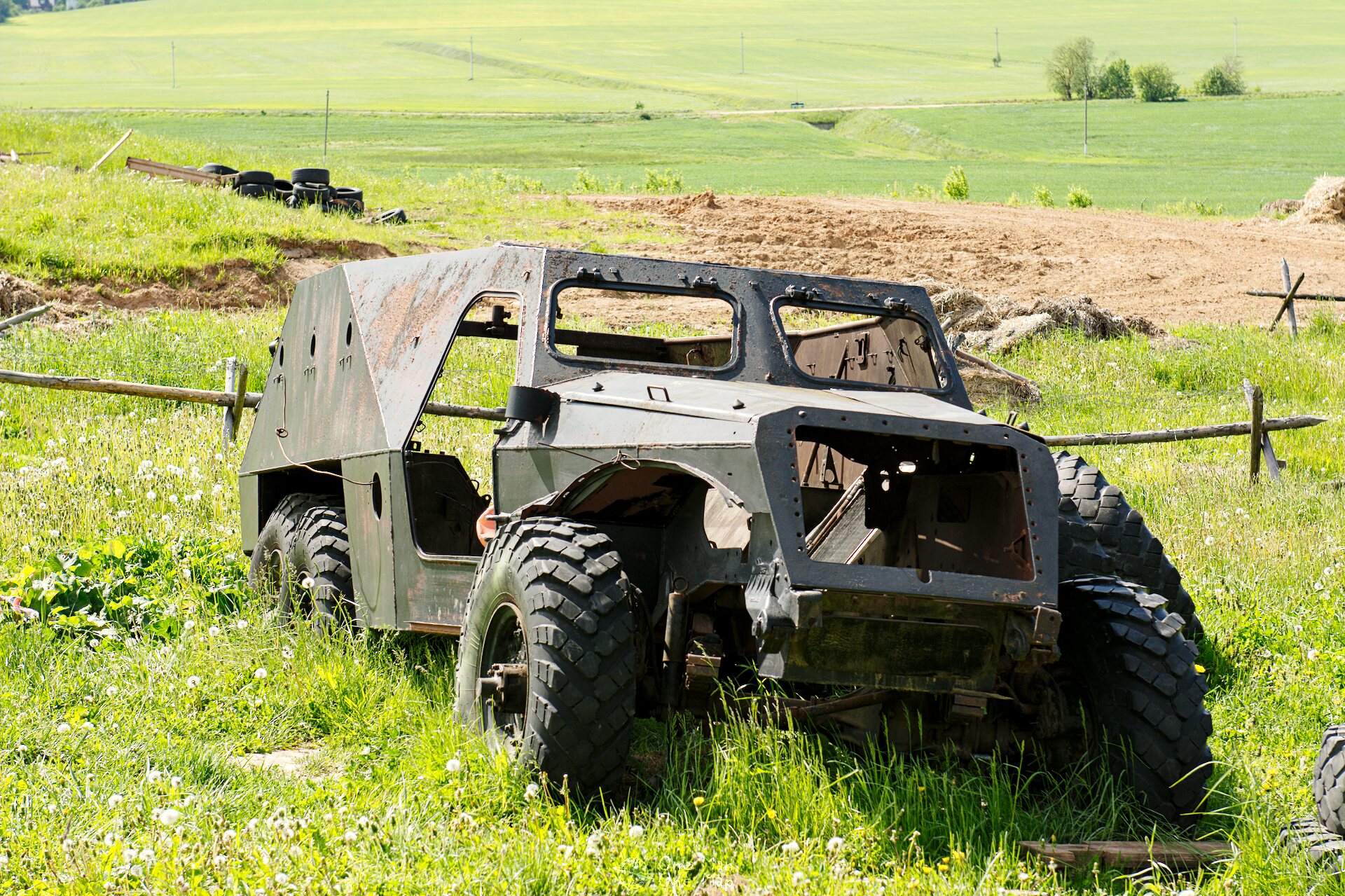
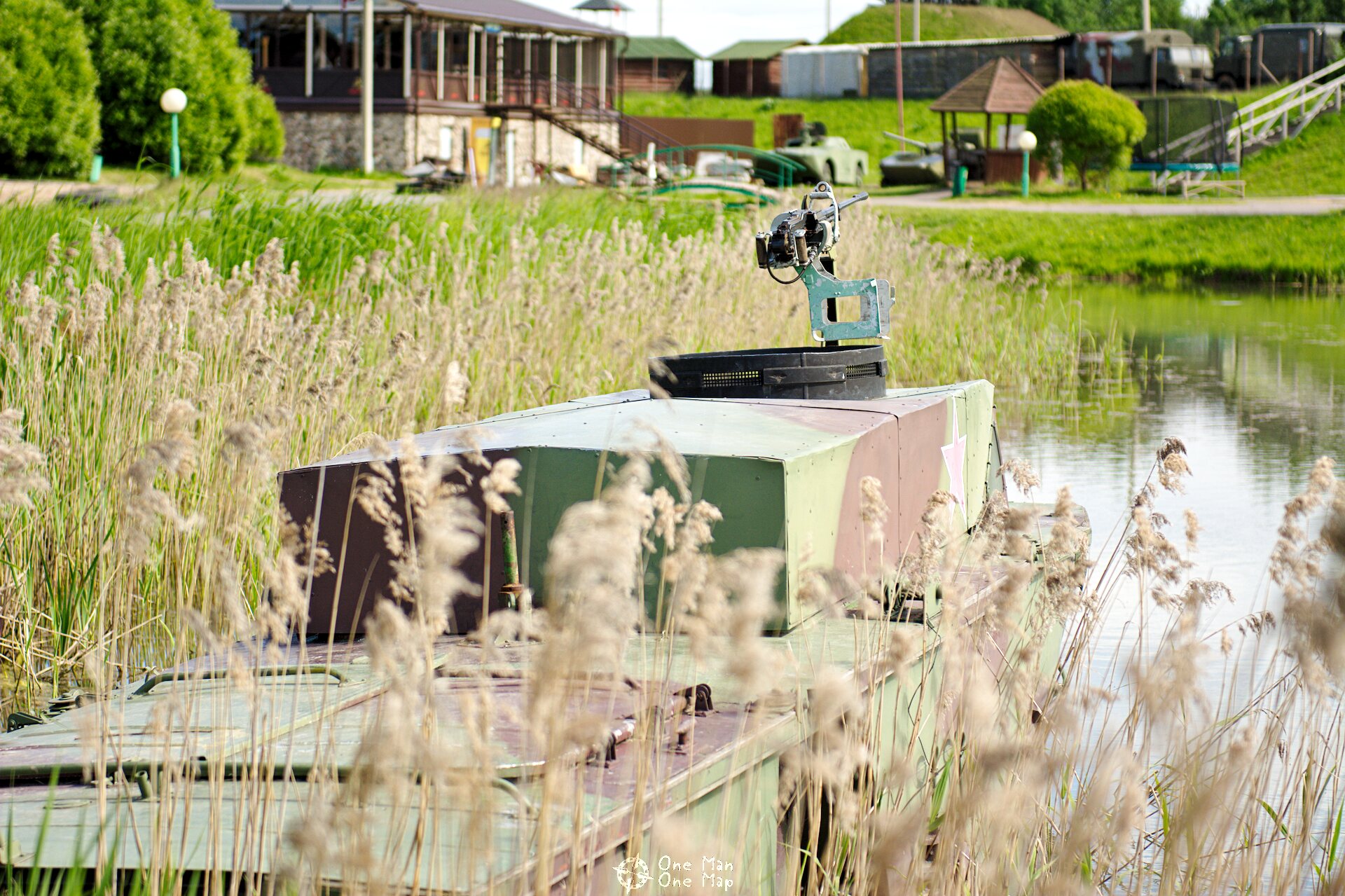
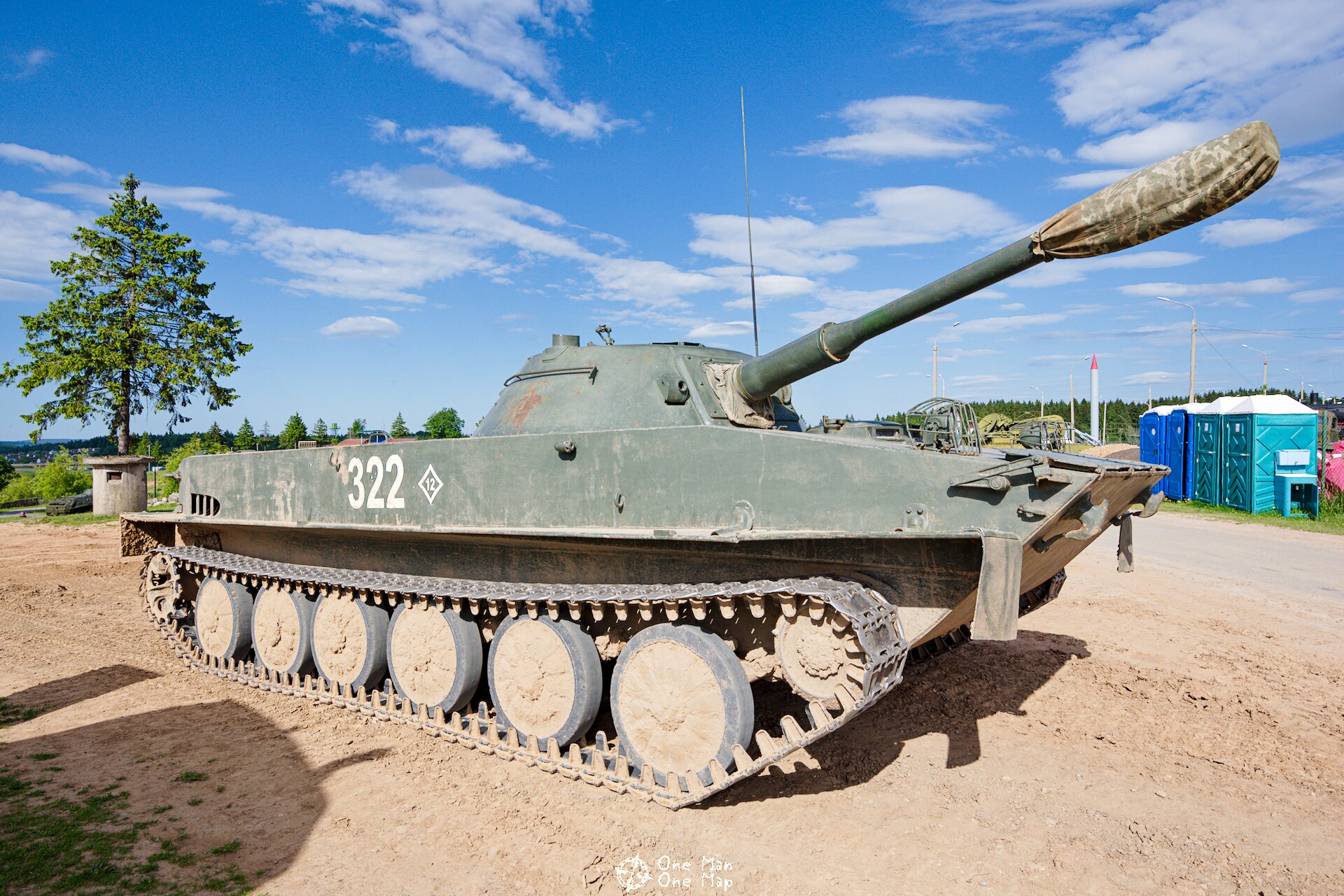
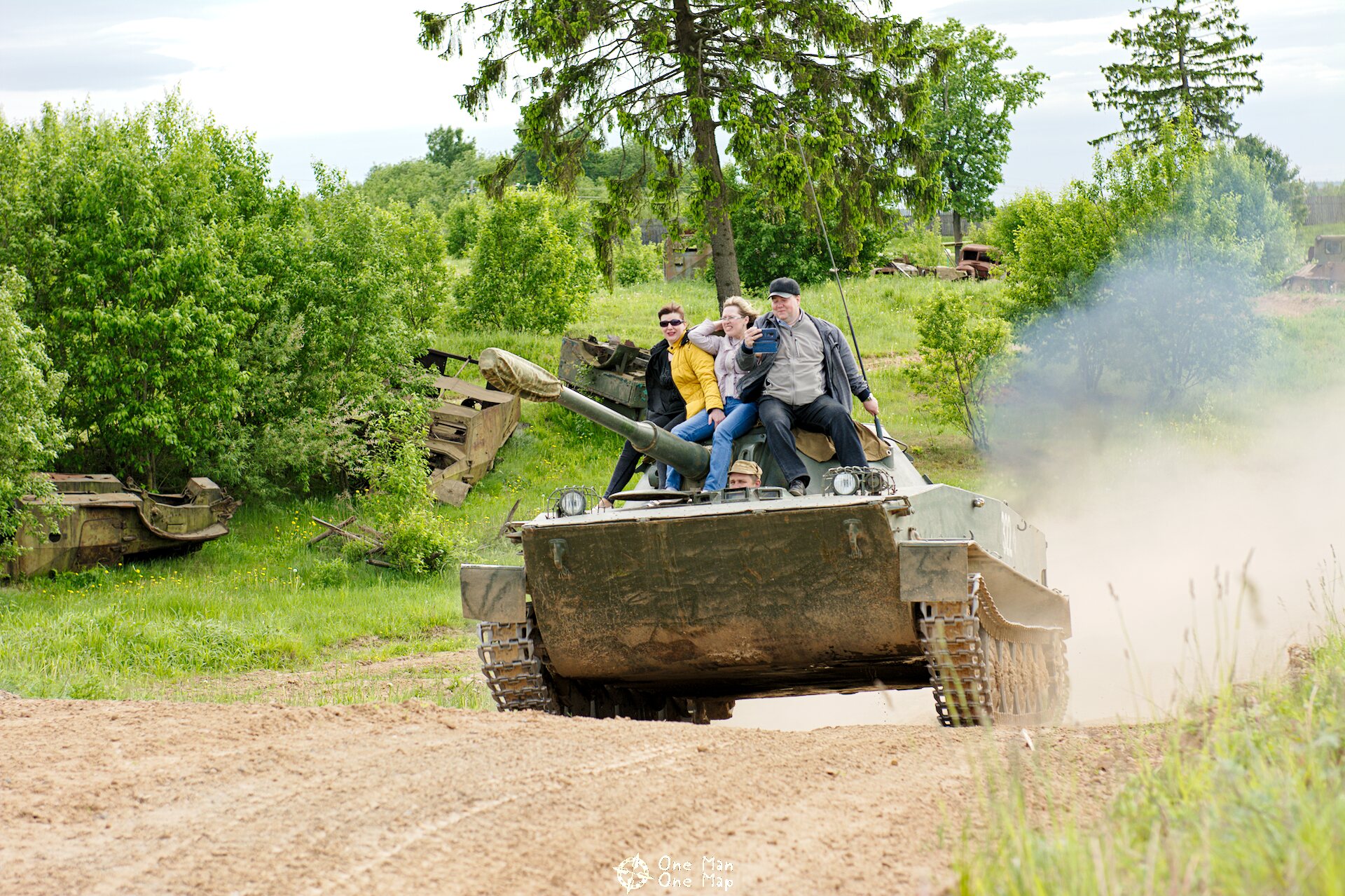
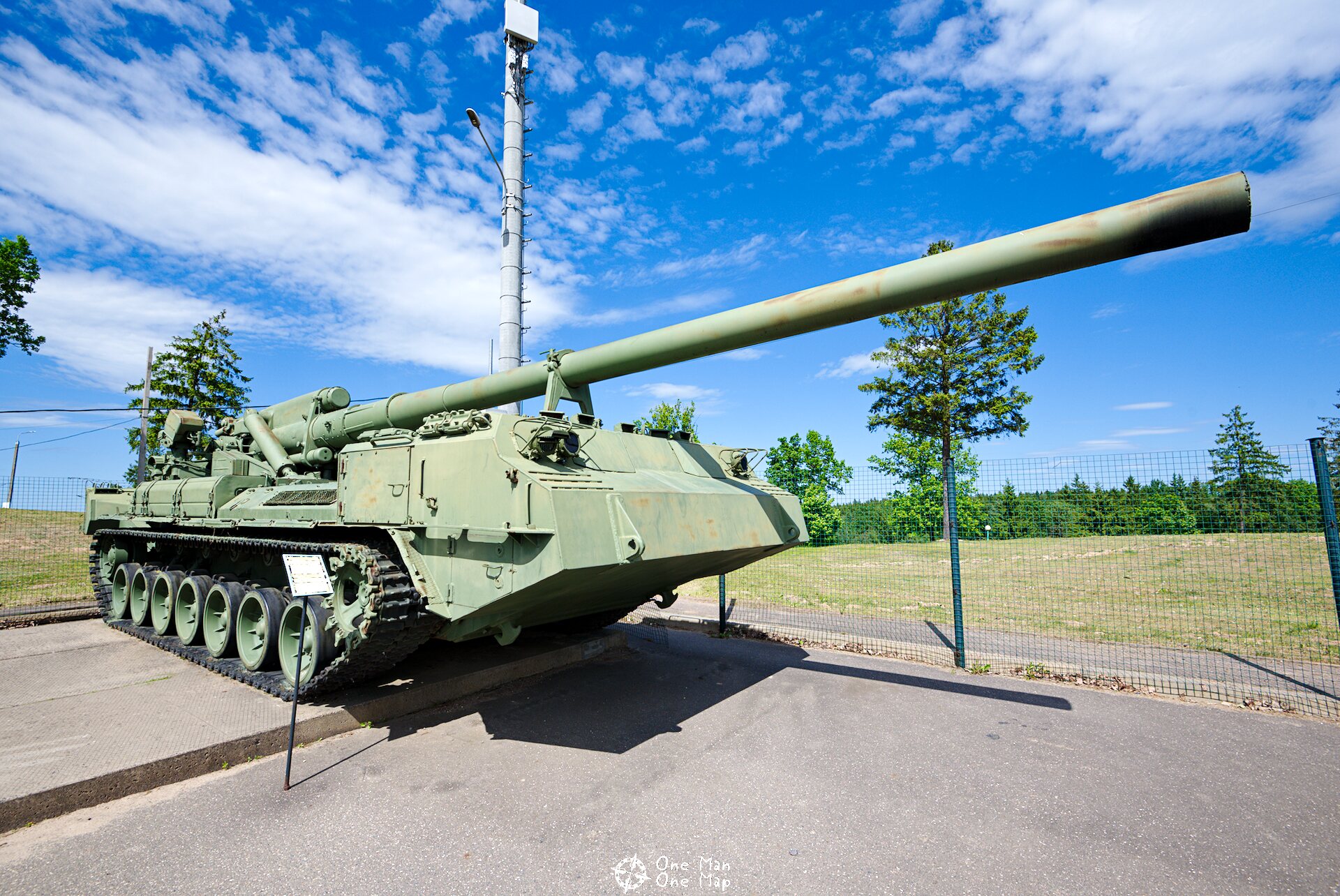
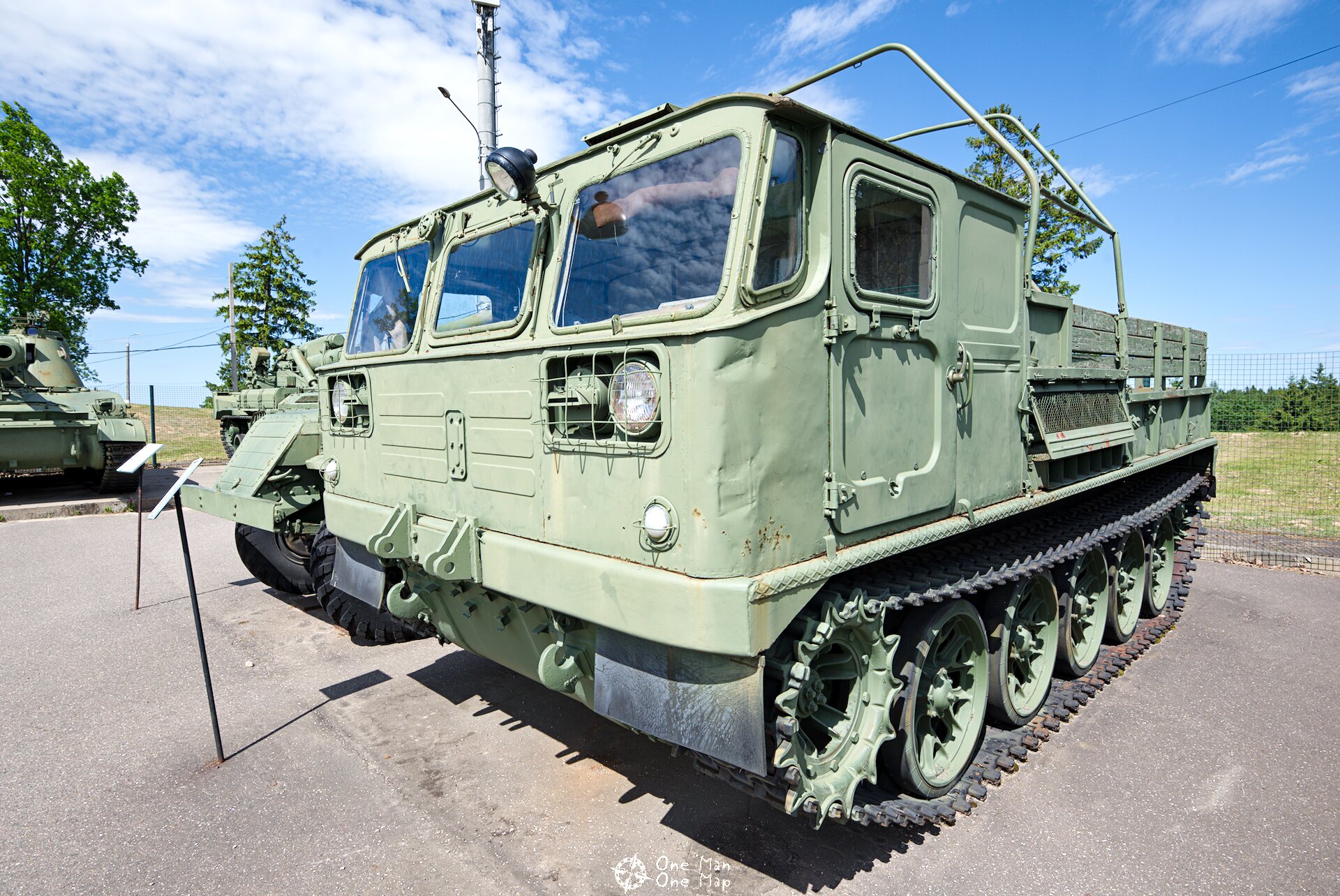
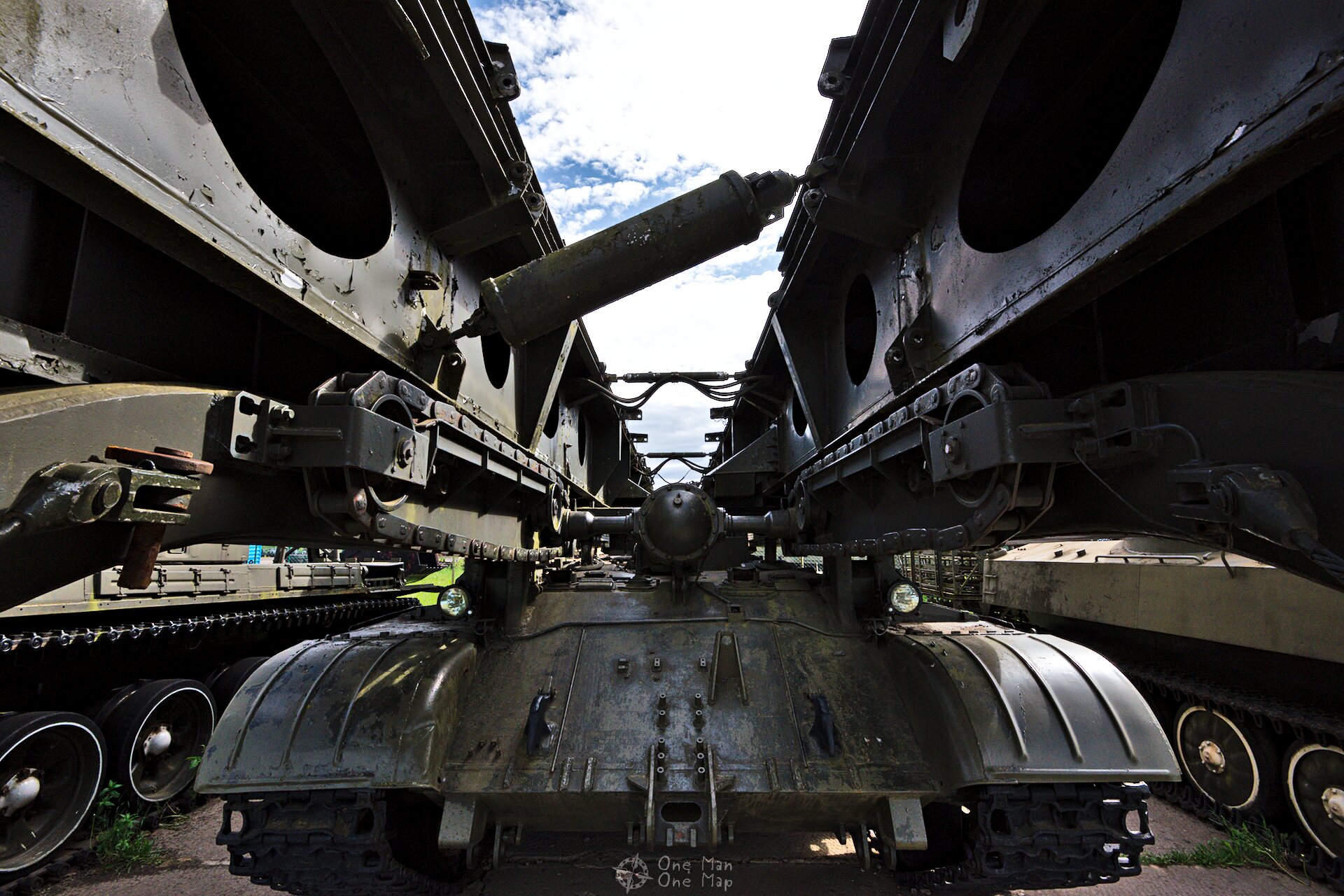
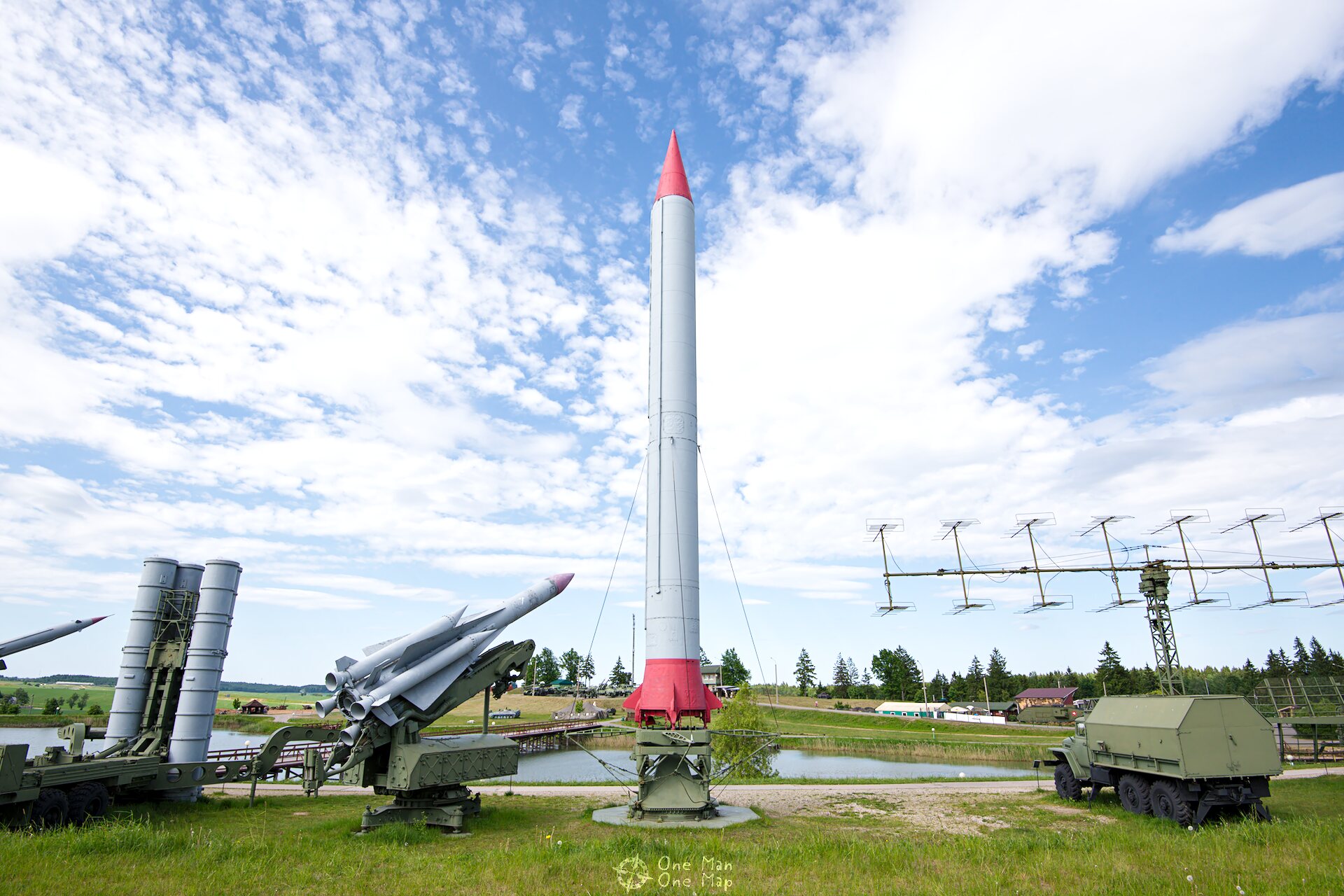
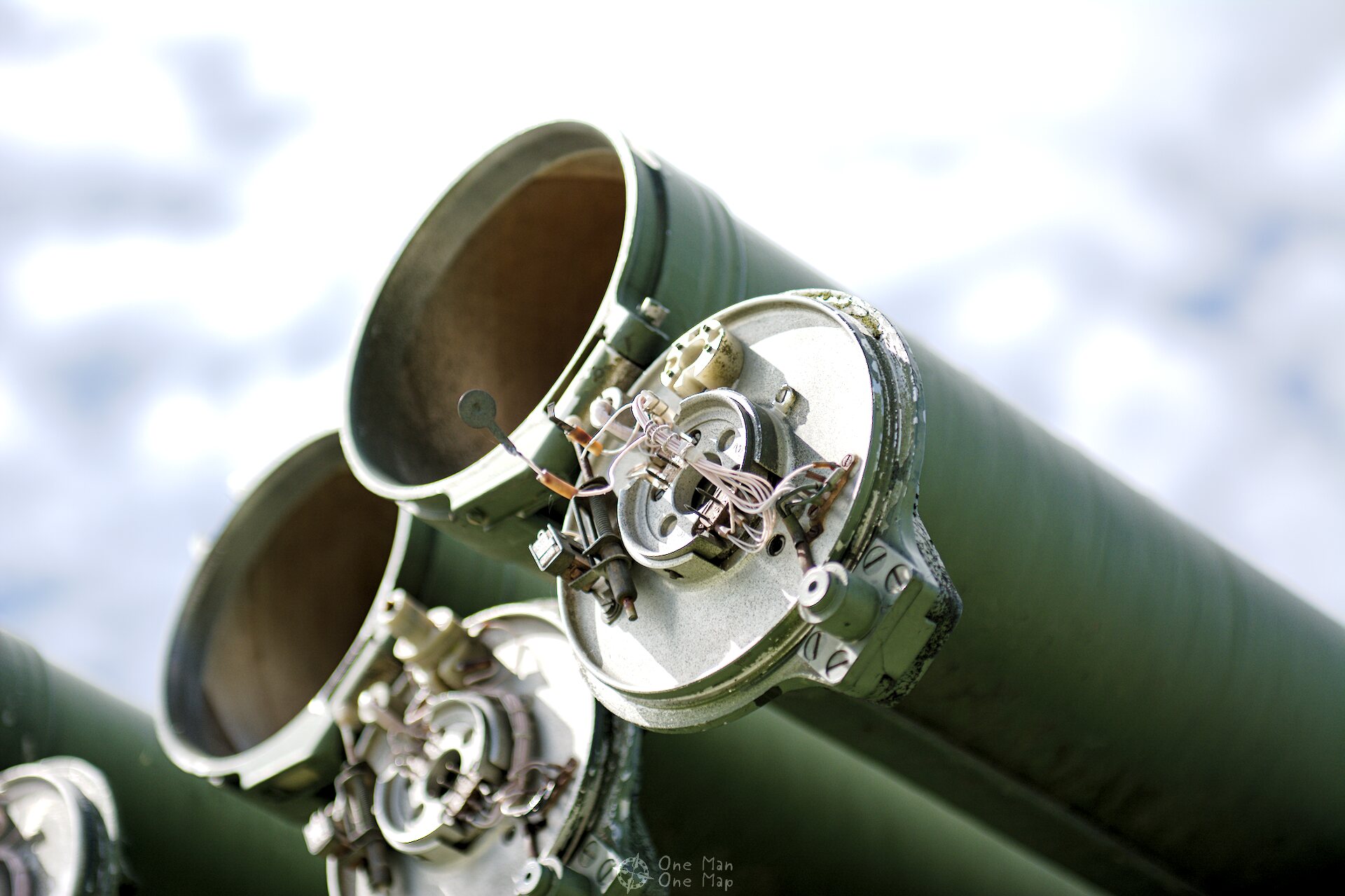
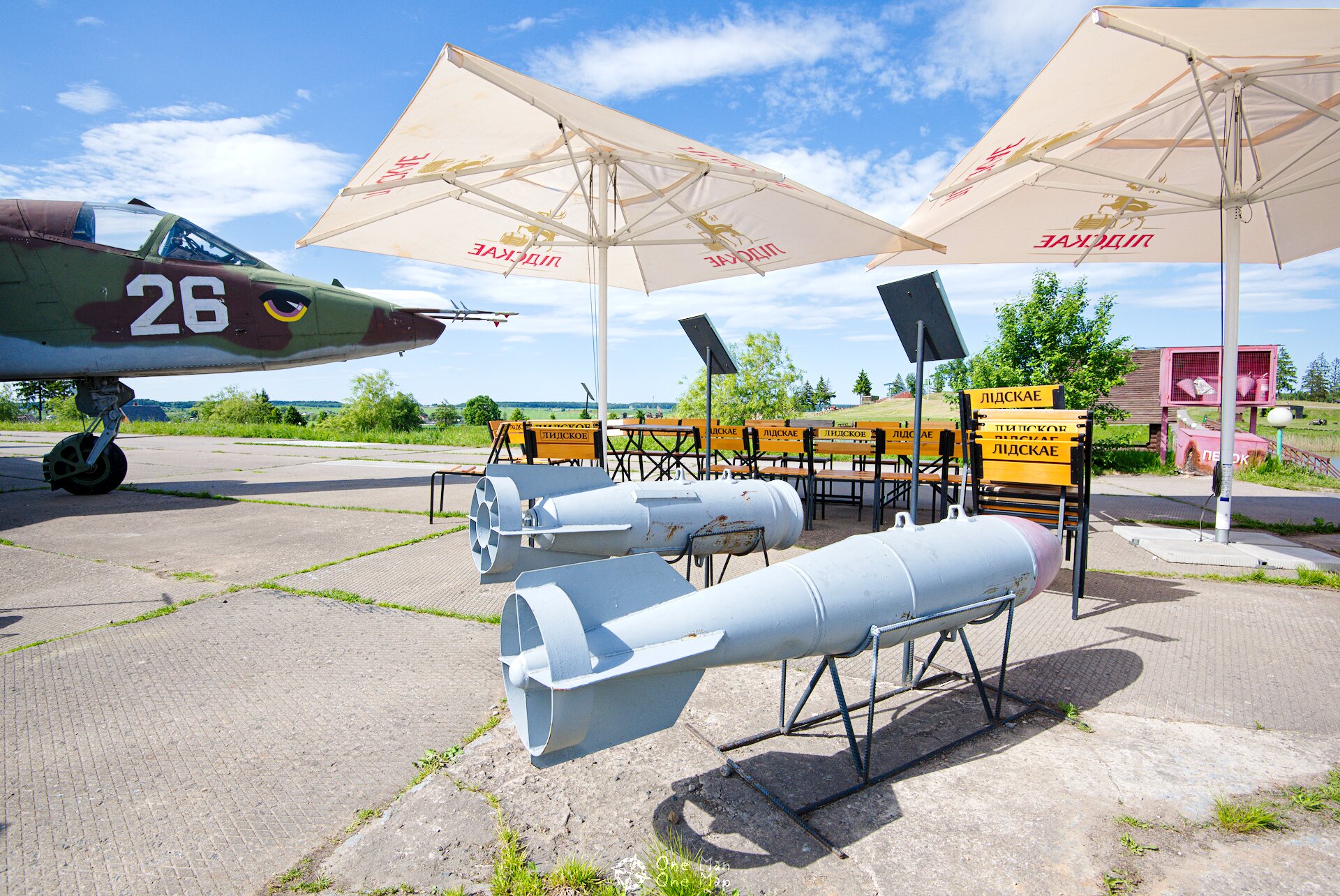
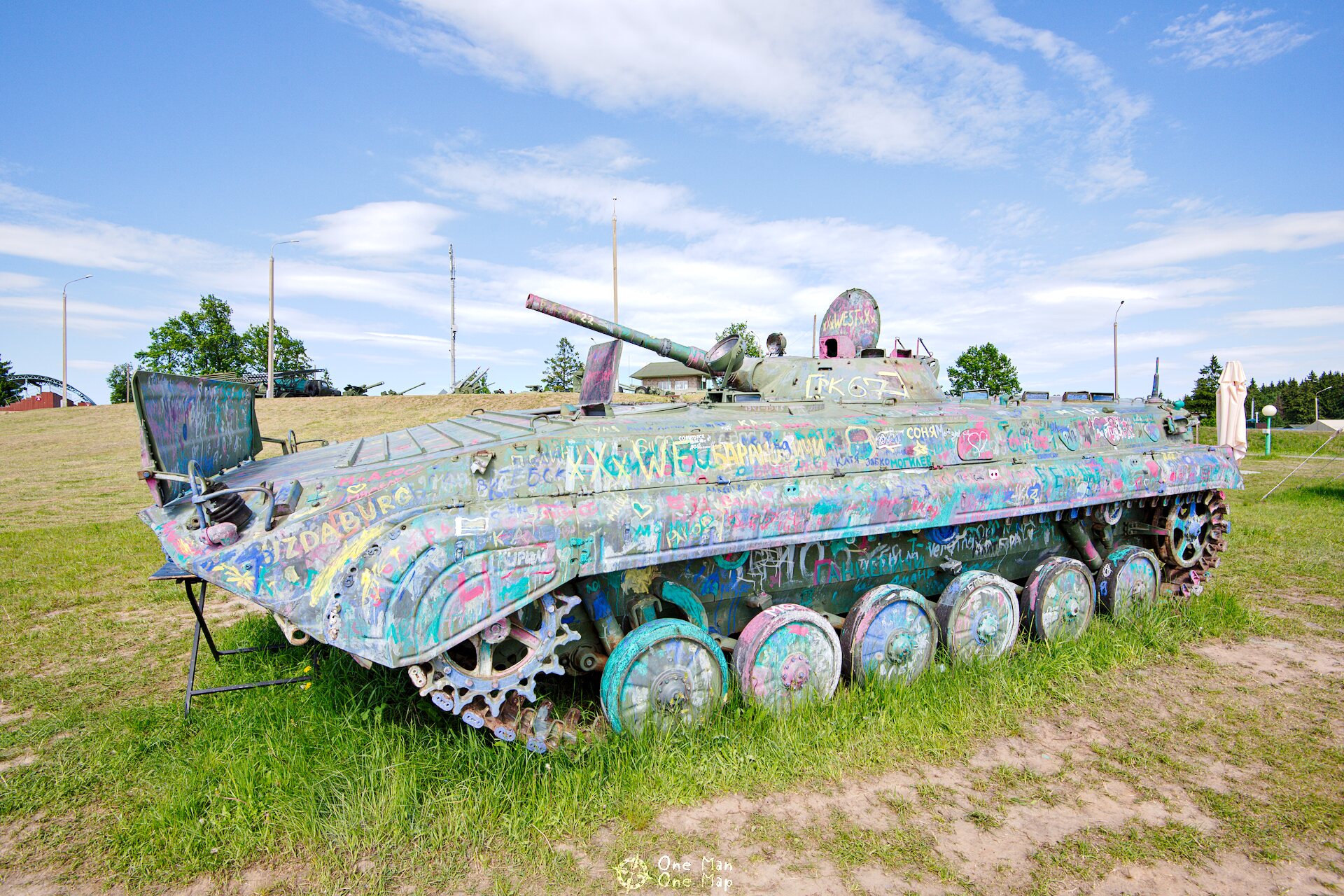
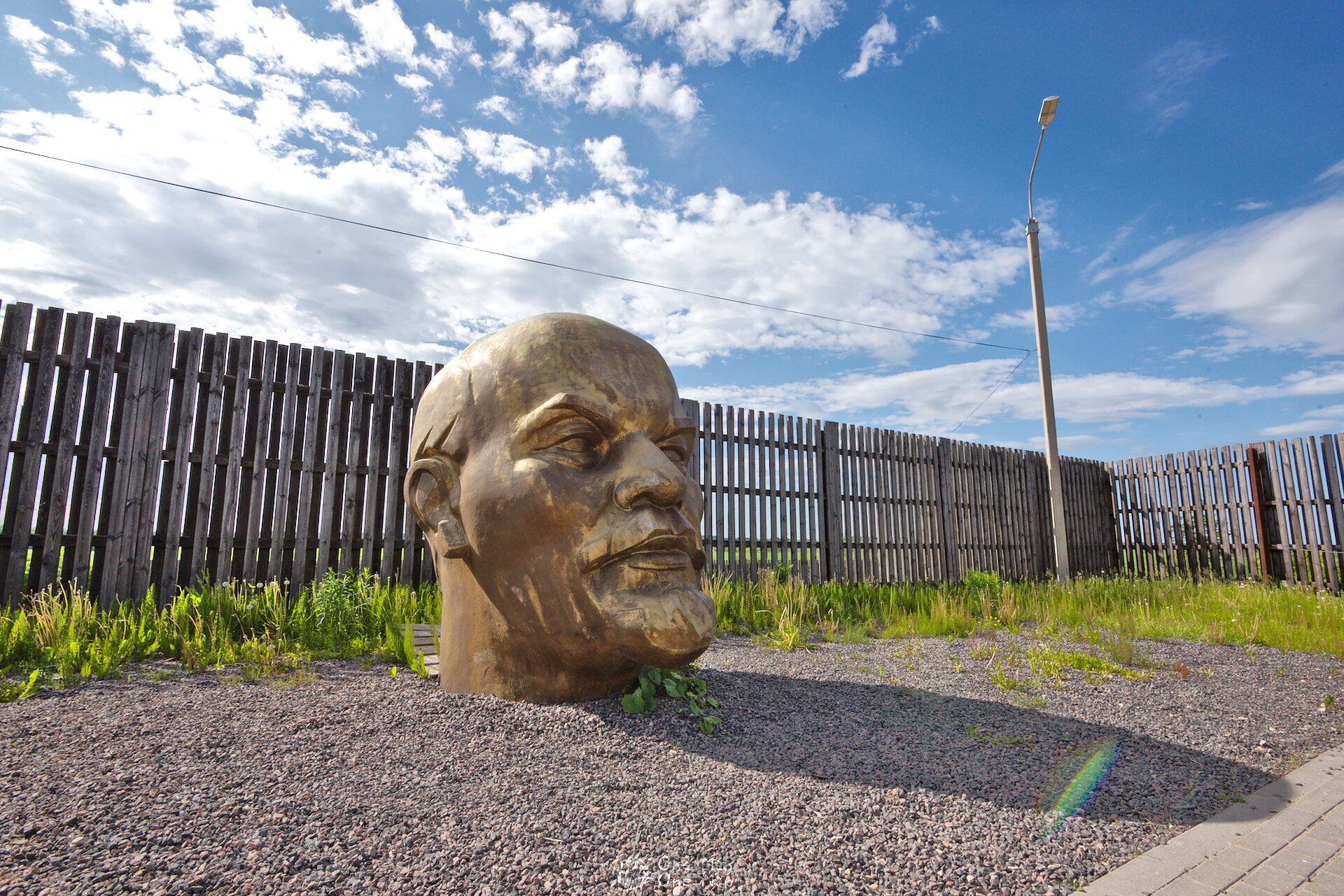
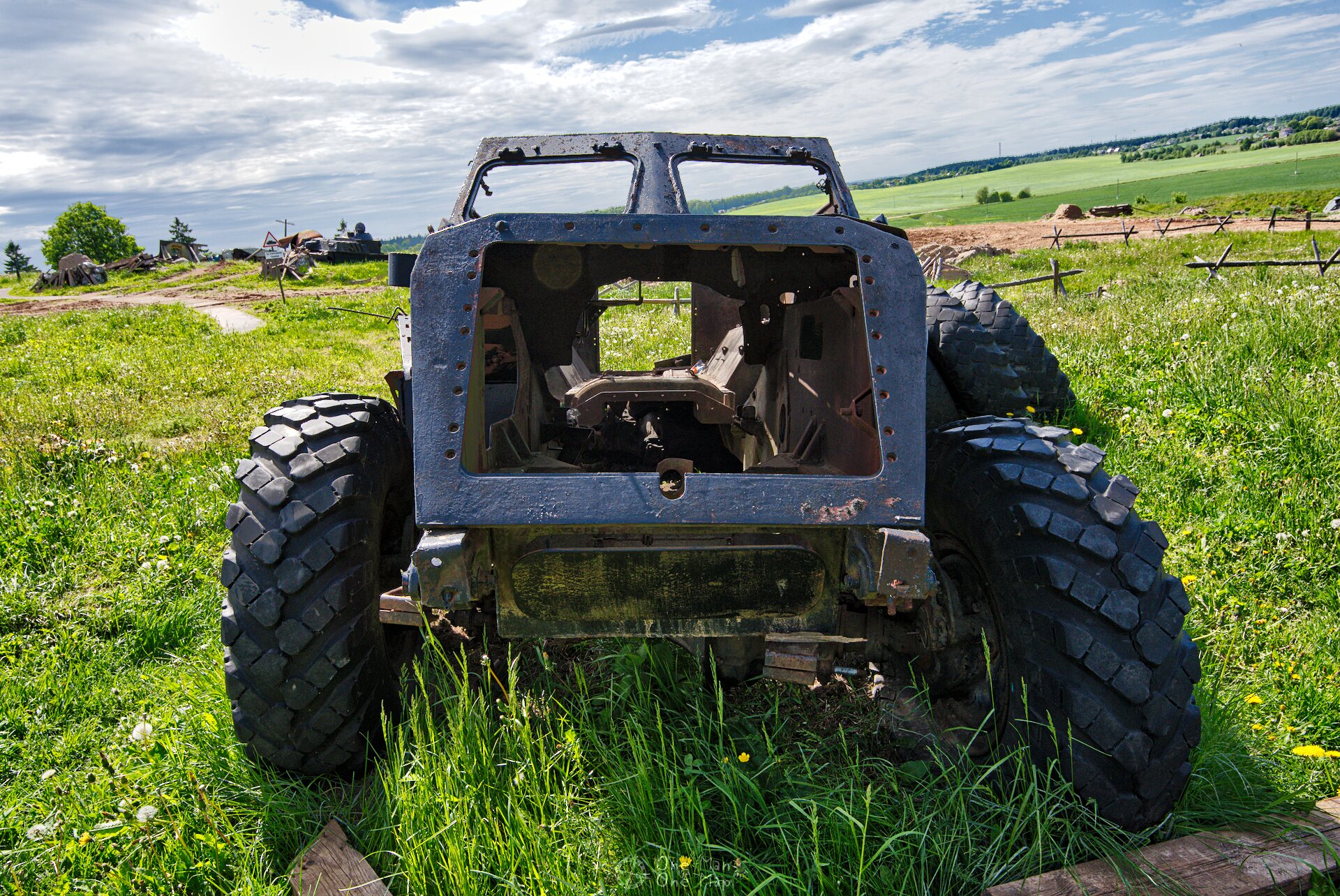
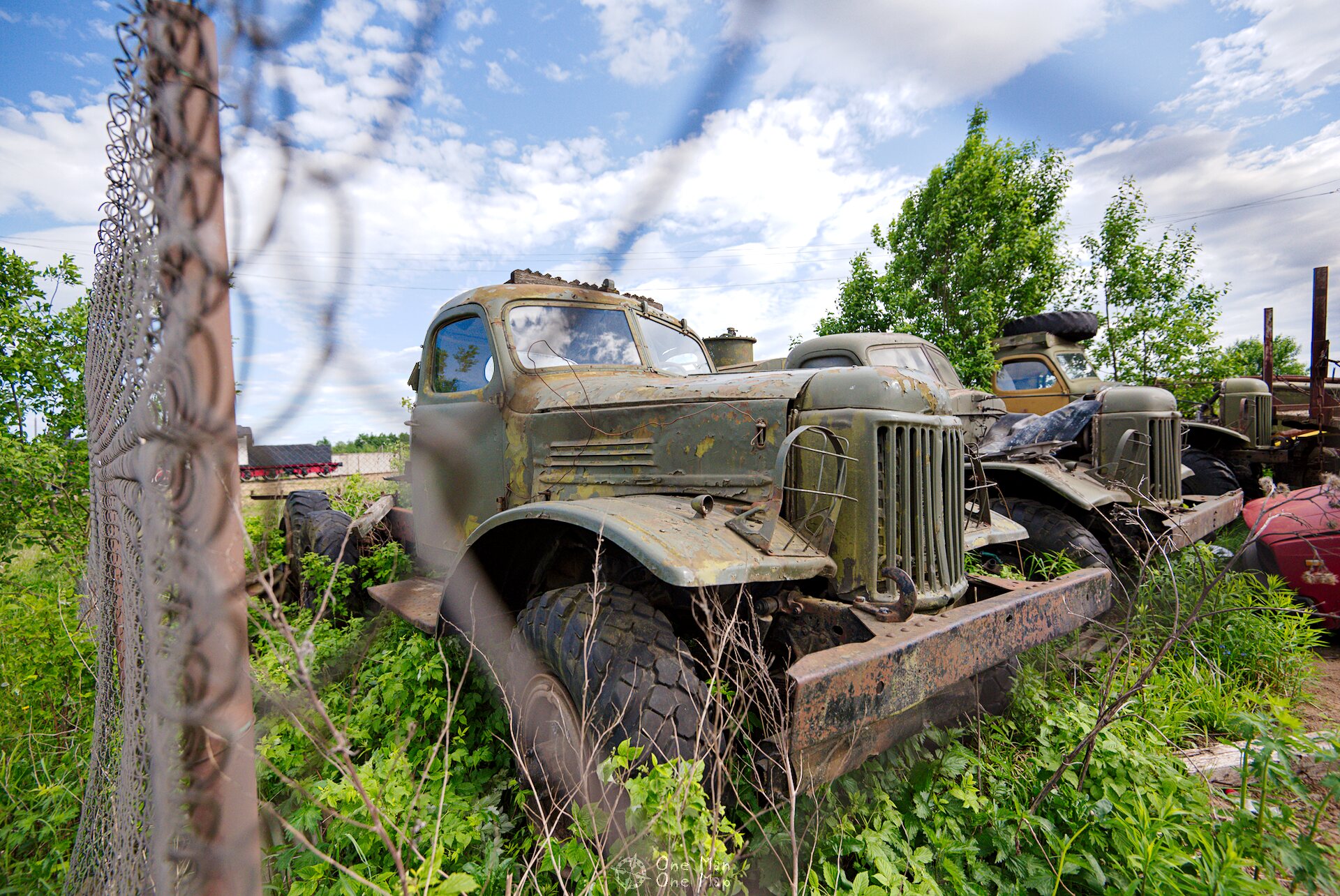
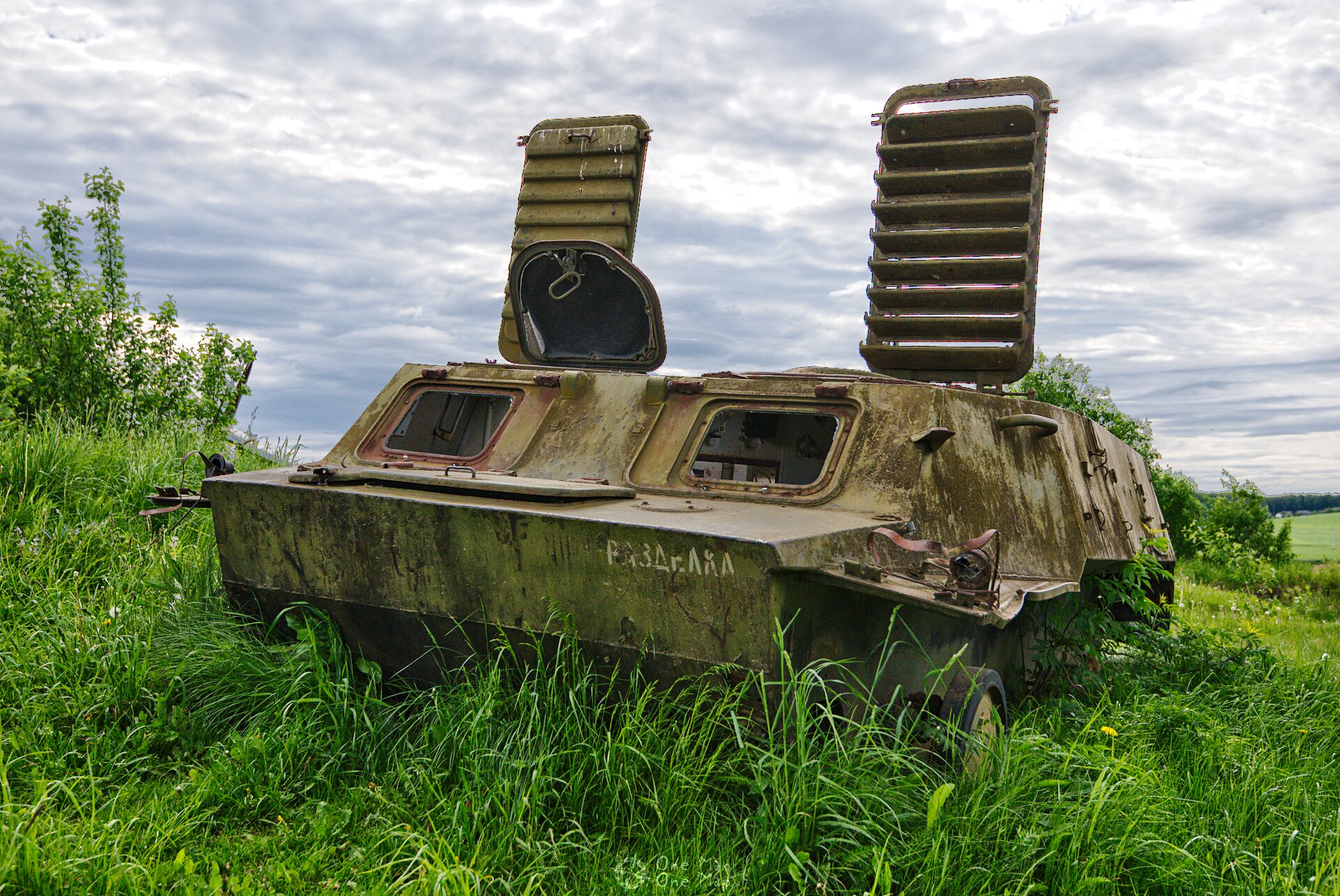

Hey – thanks for the great write up. I’m visiting Belarus soon and eager to visit the Stalin Line. Did you need to book anything in advance or did you just drive up? Would you recommend visiting solo or joining a tour?
Hi,
I just drove up to the place. There’s no need to pre-arrange something or join a tour if you have your own means of transportation – except maybe if you want to drive one of the older tanks or fly with the helicopter.
Have fun in Belarus!